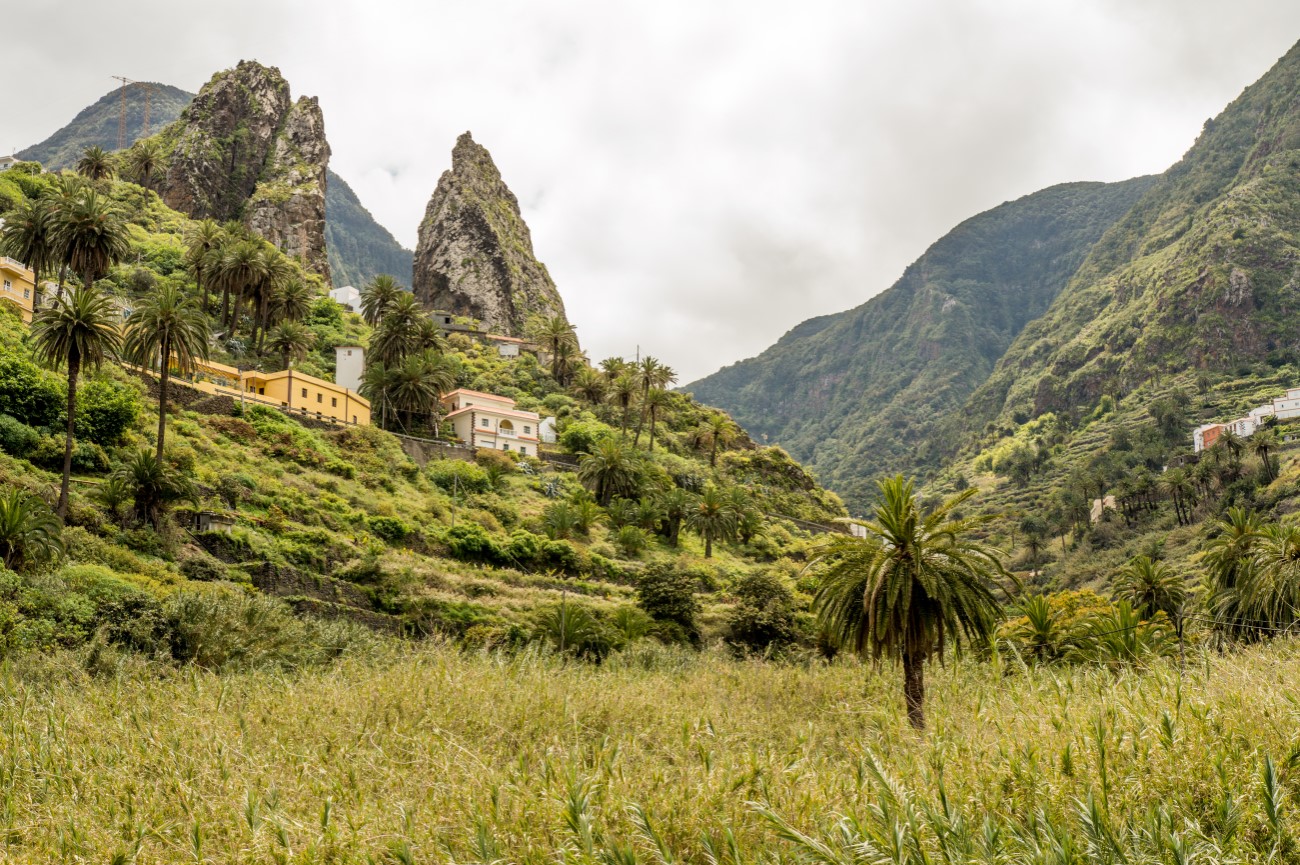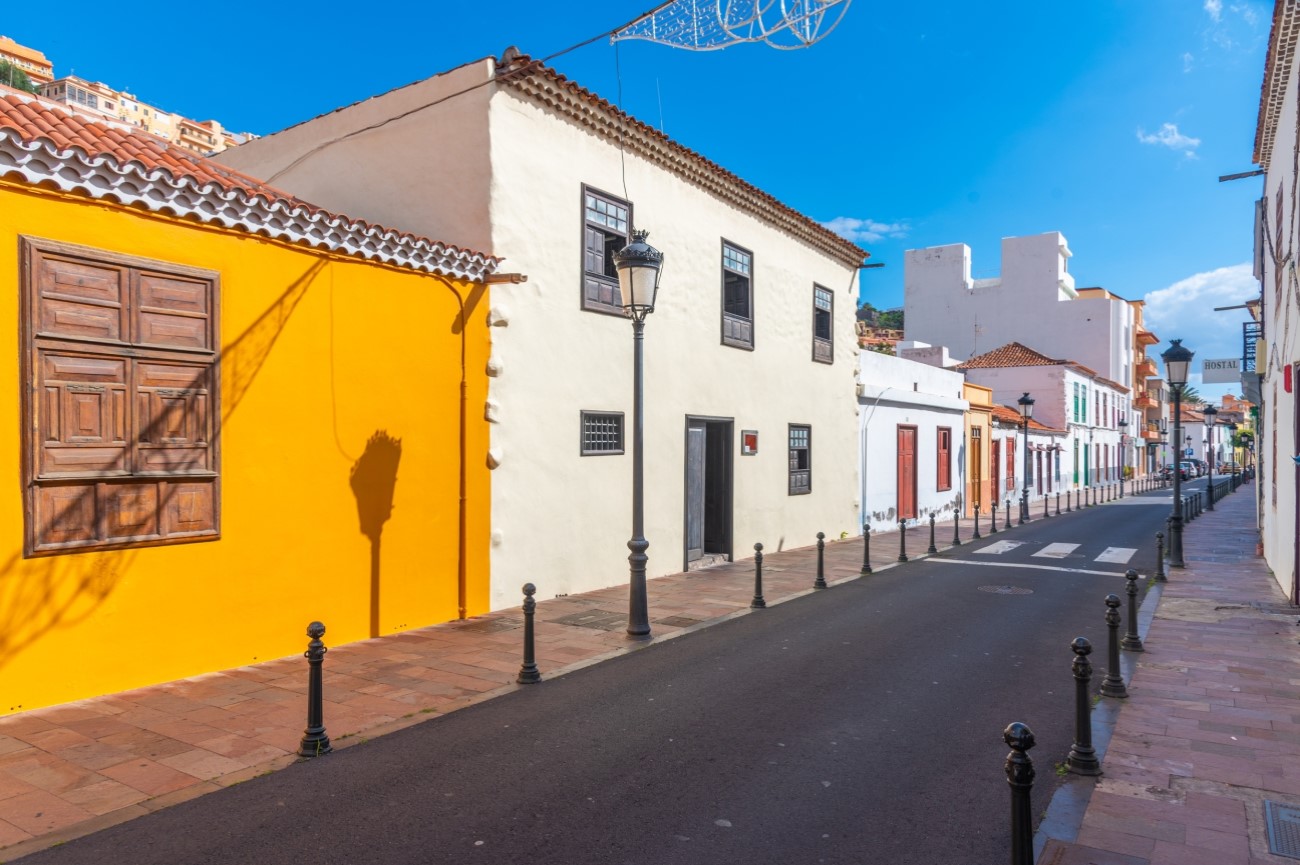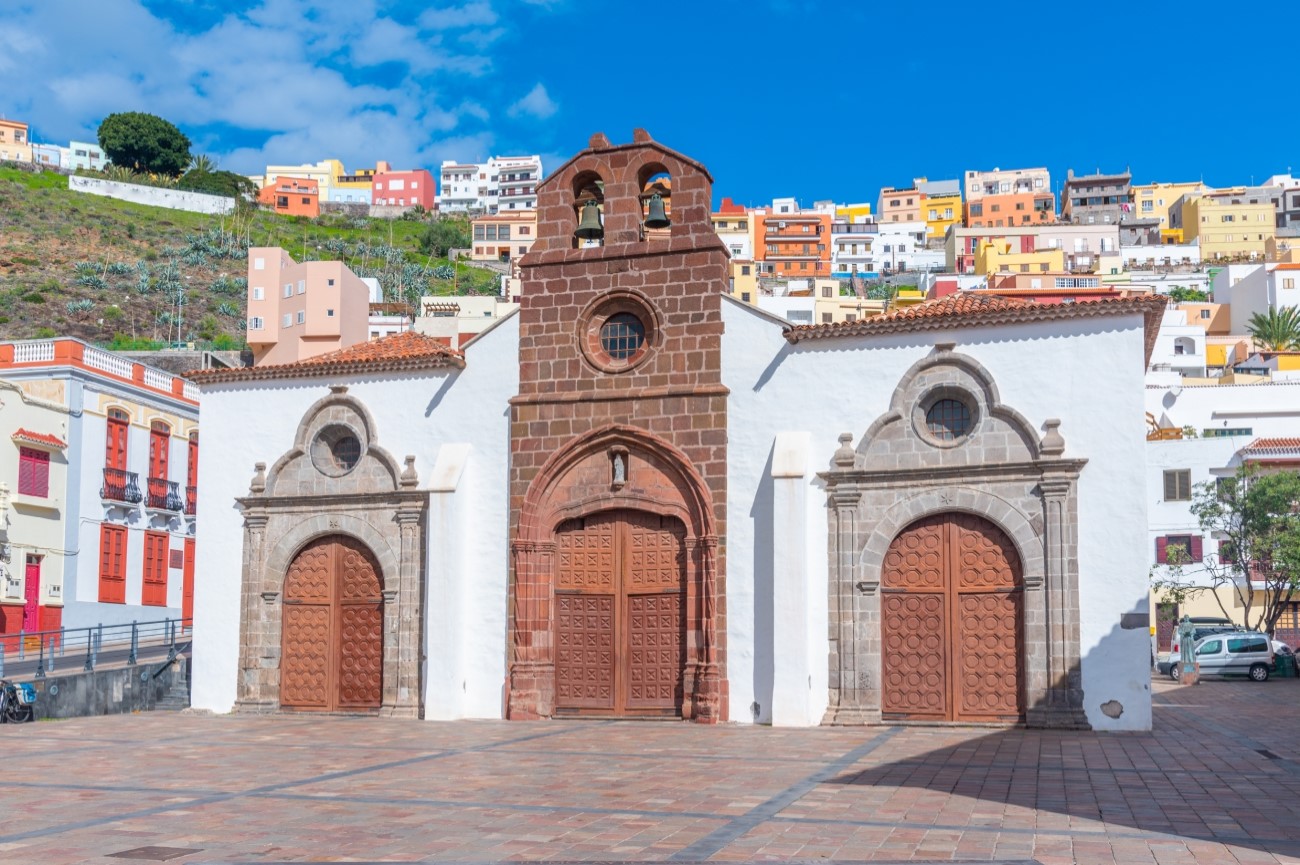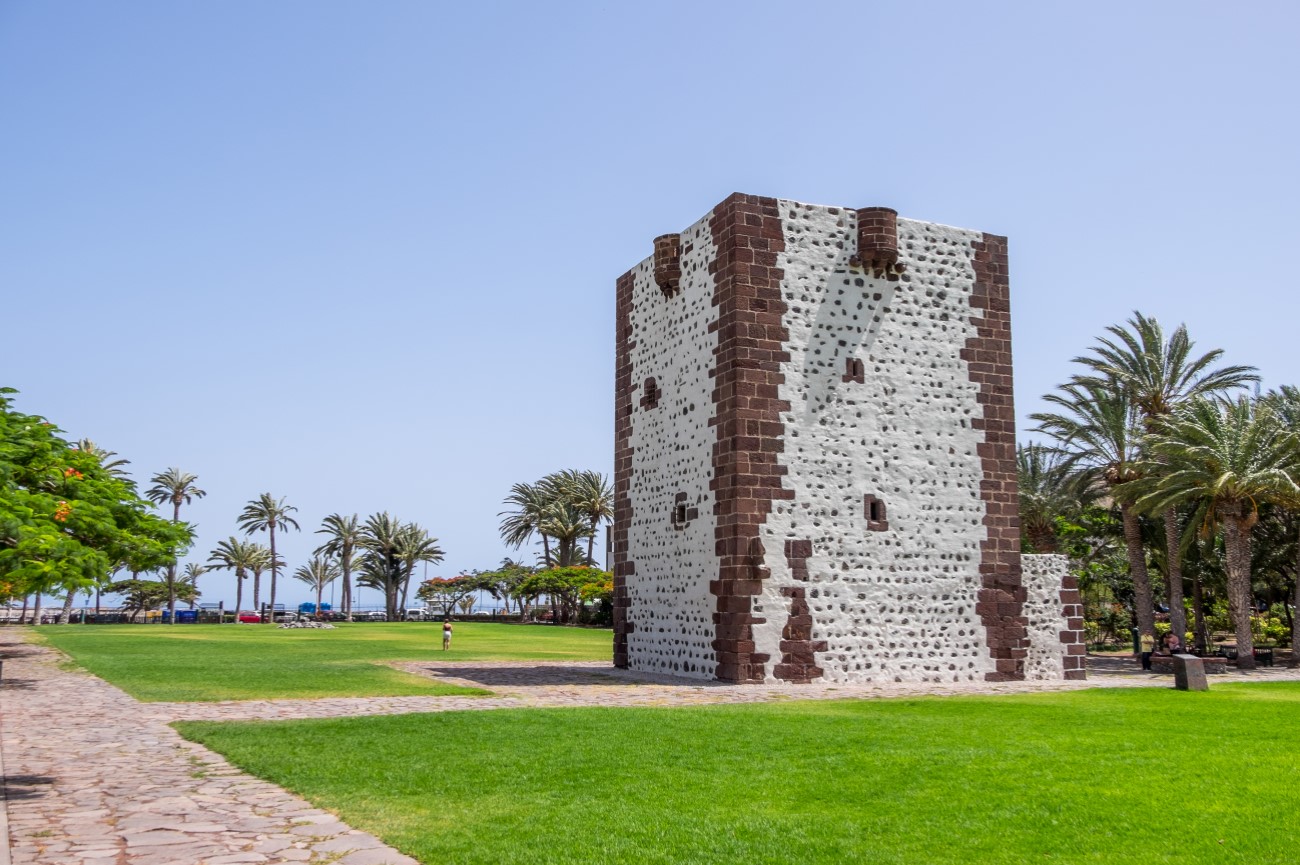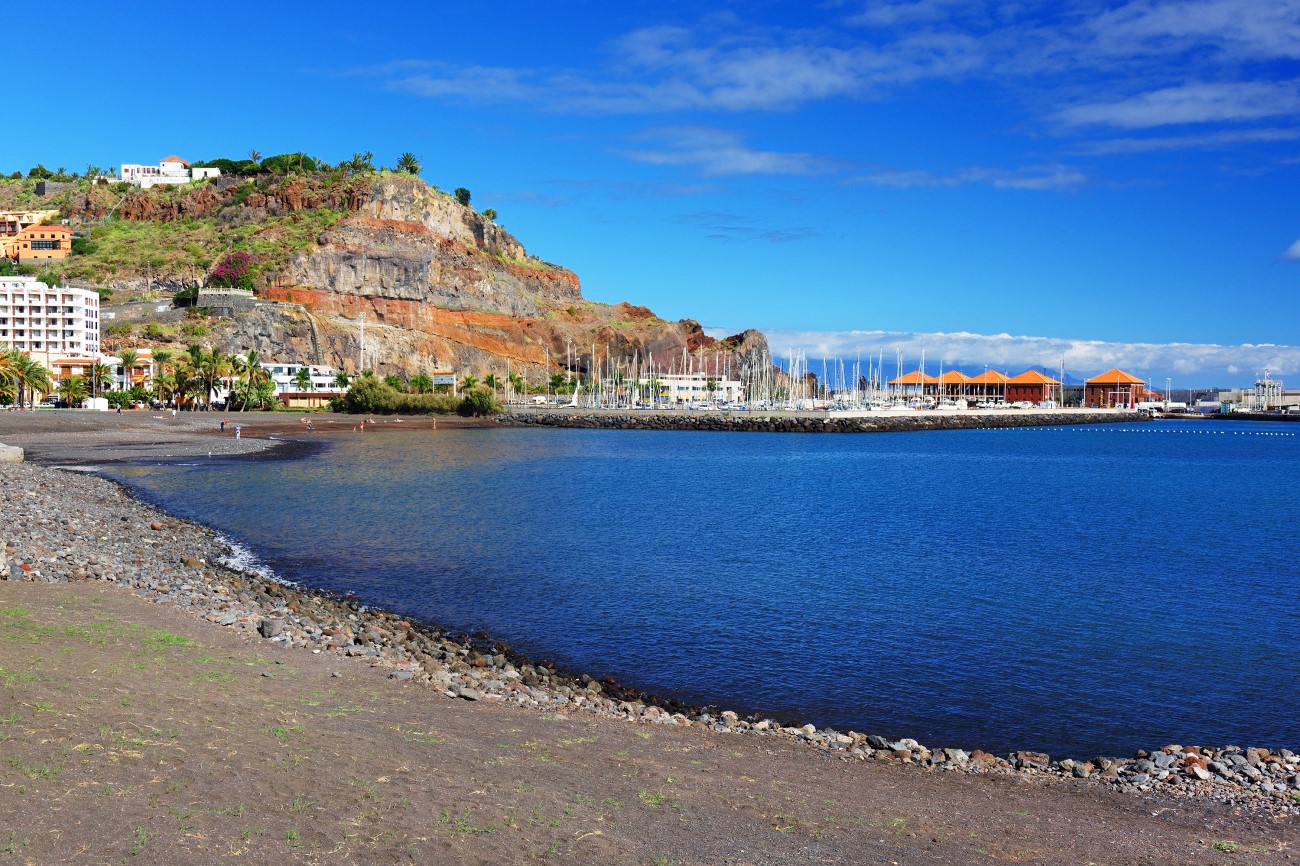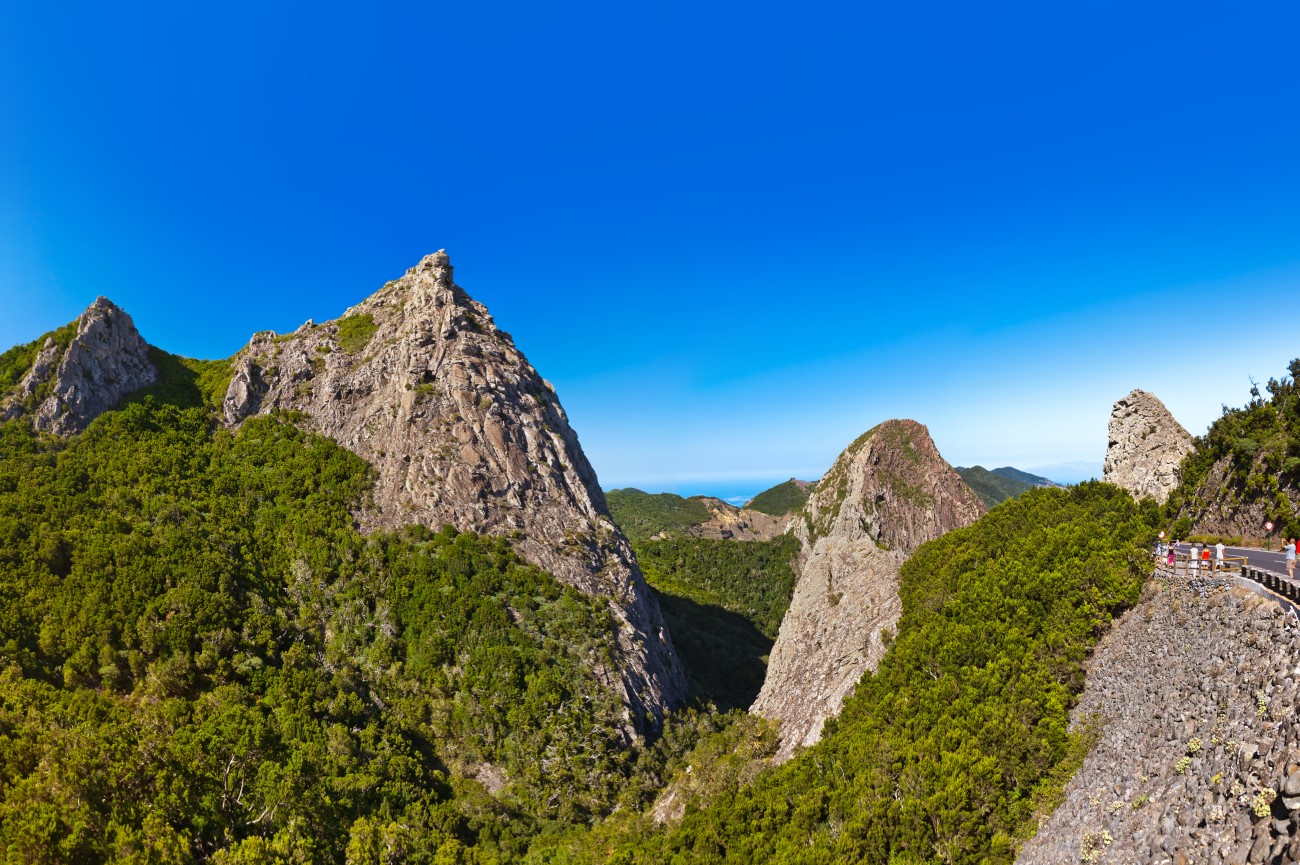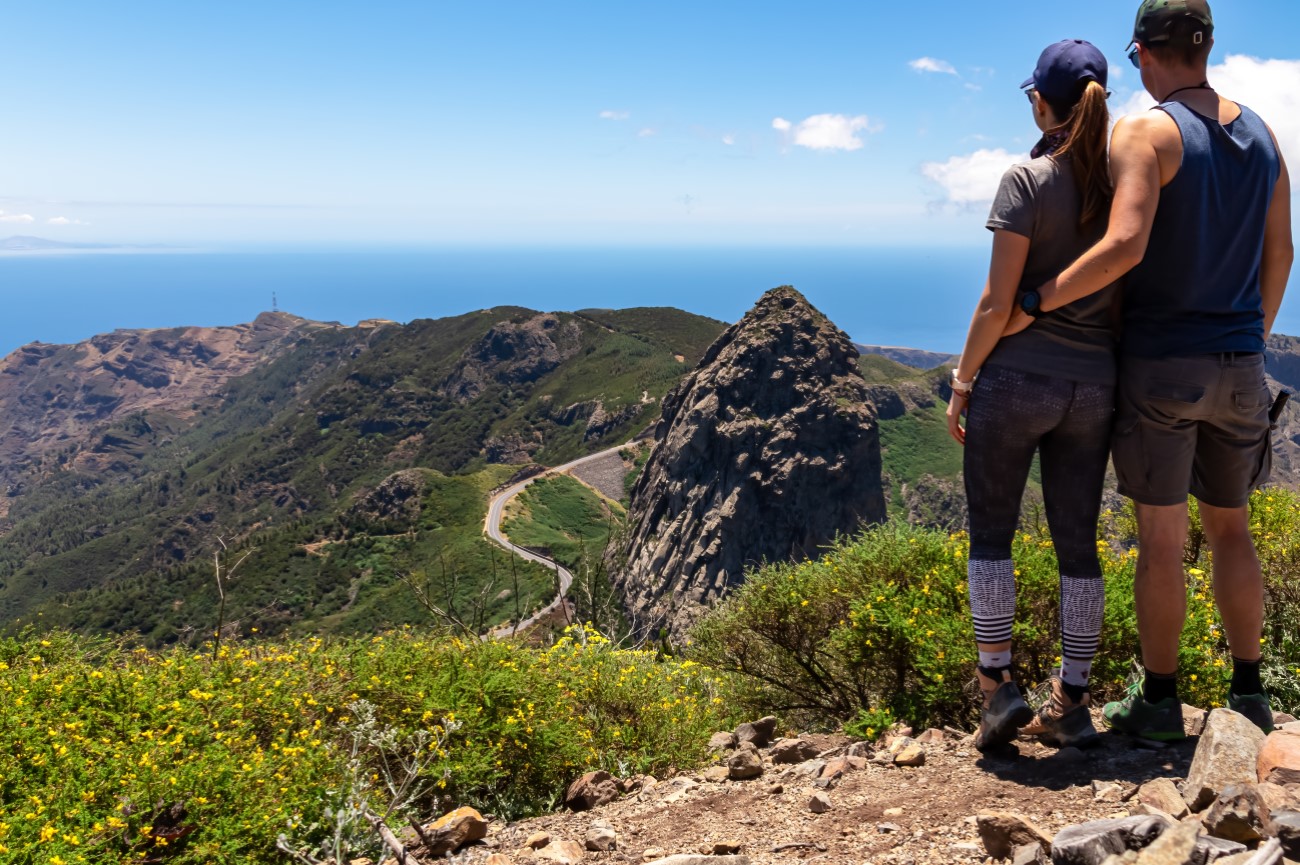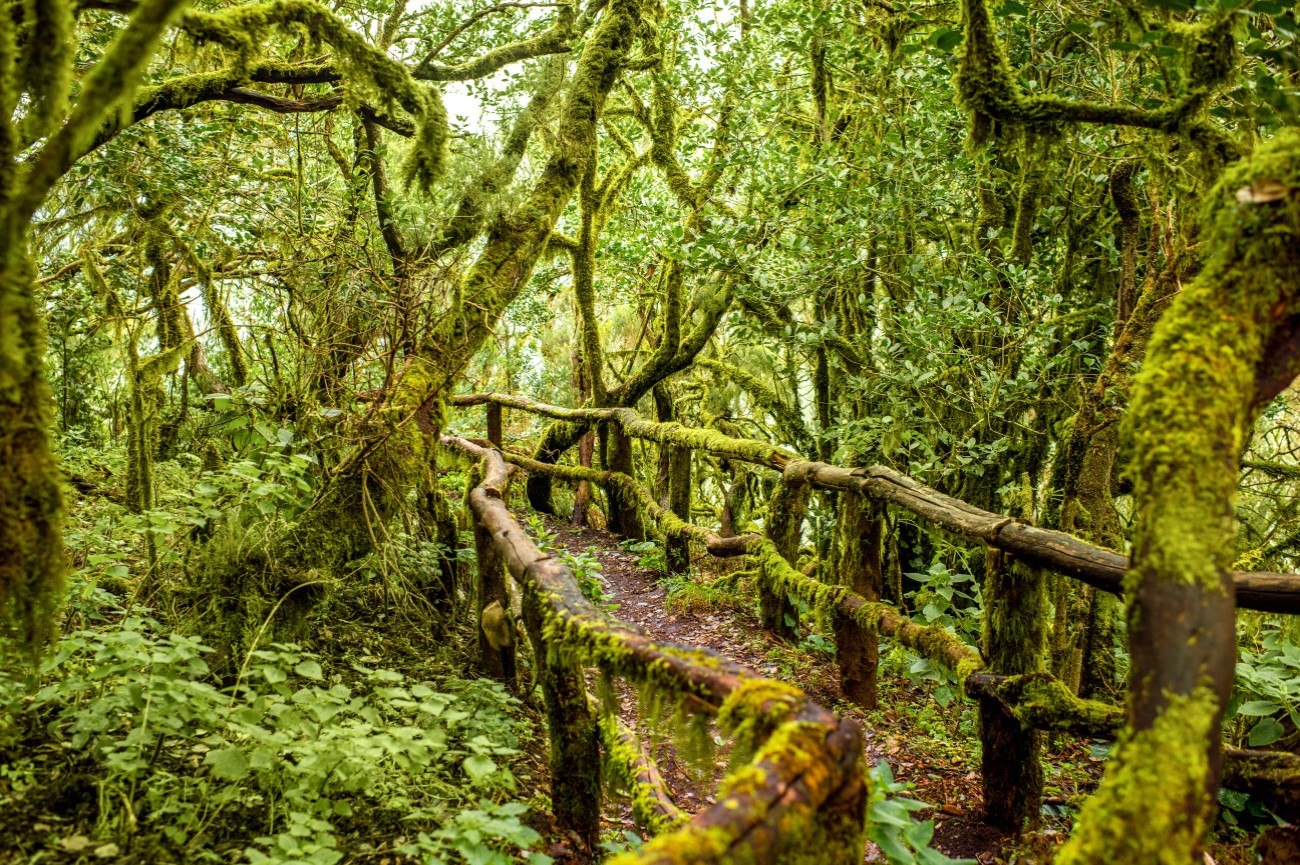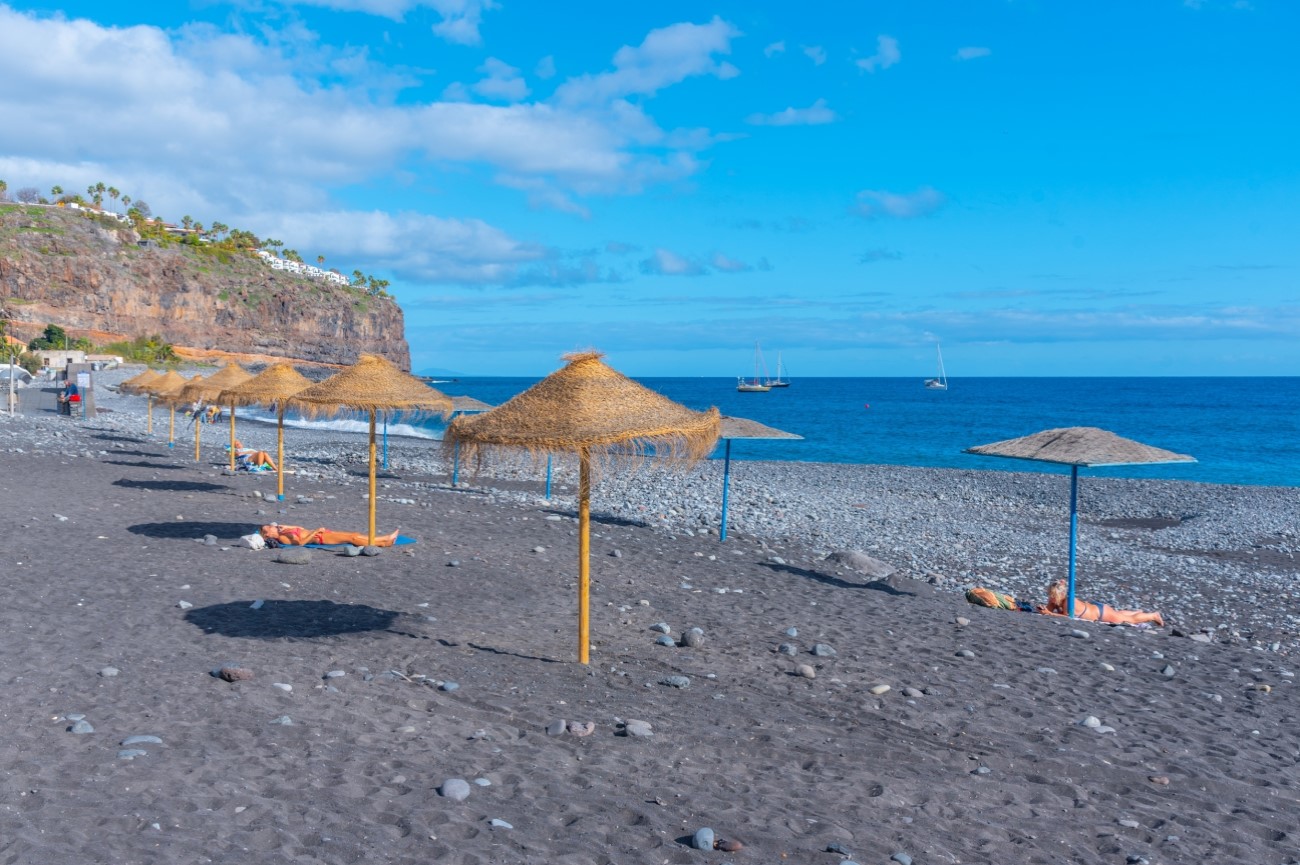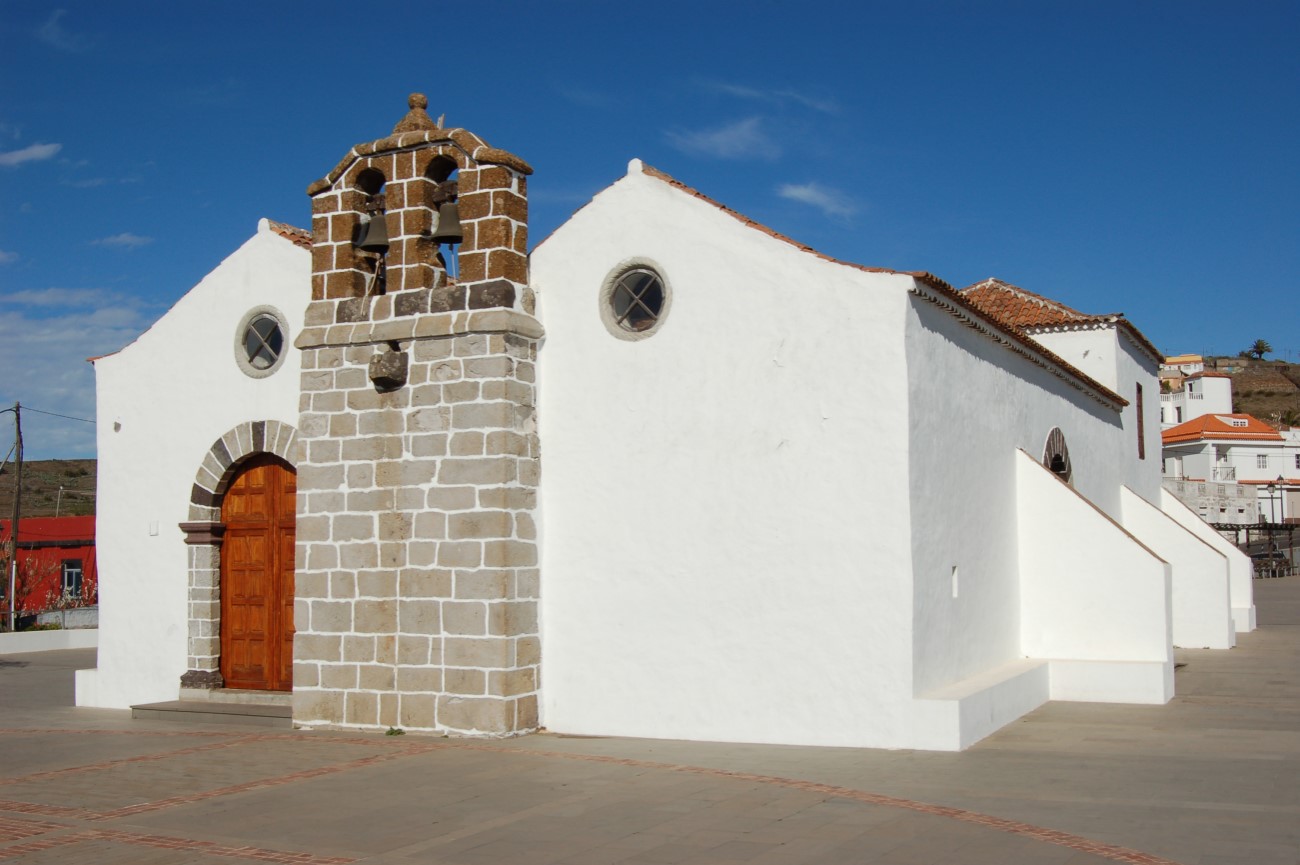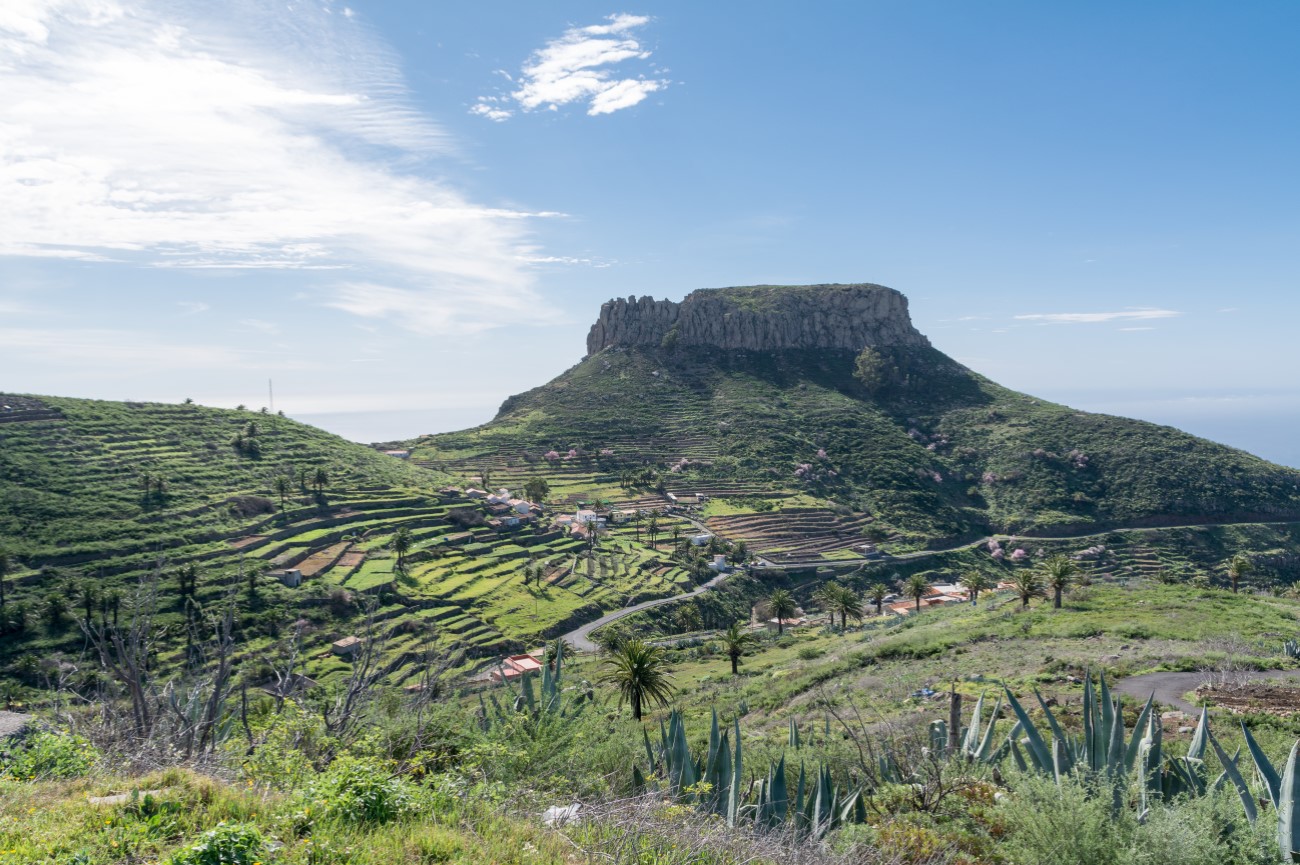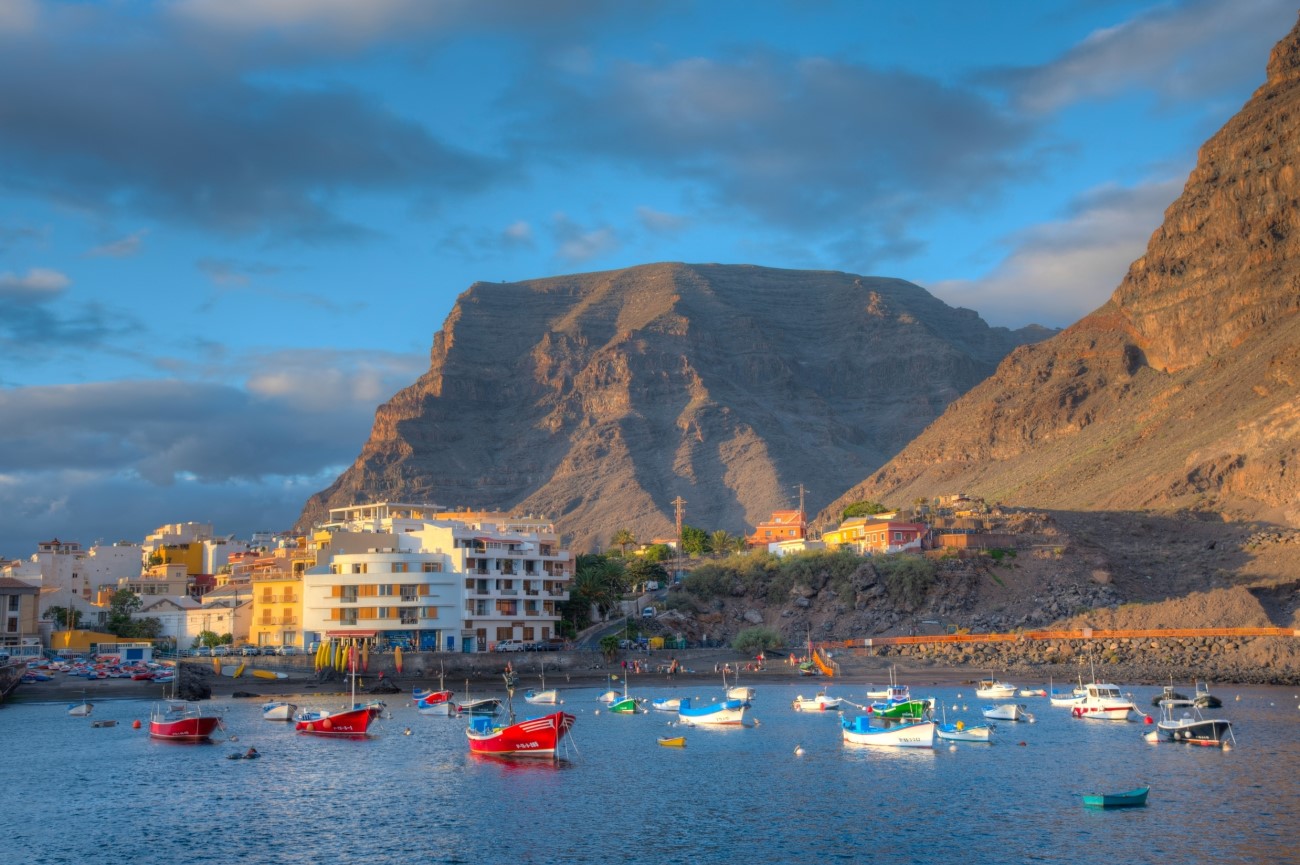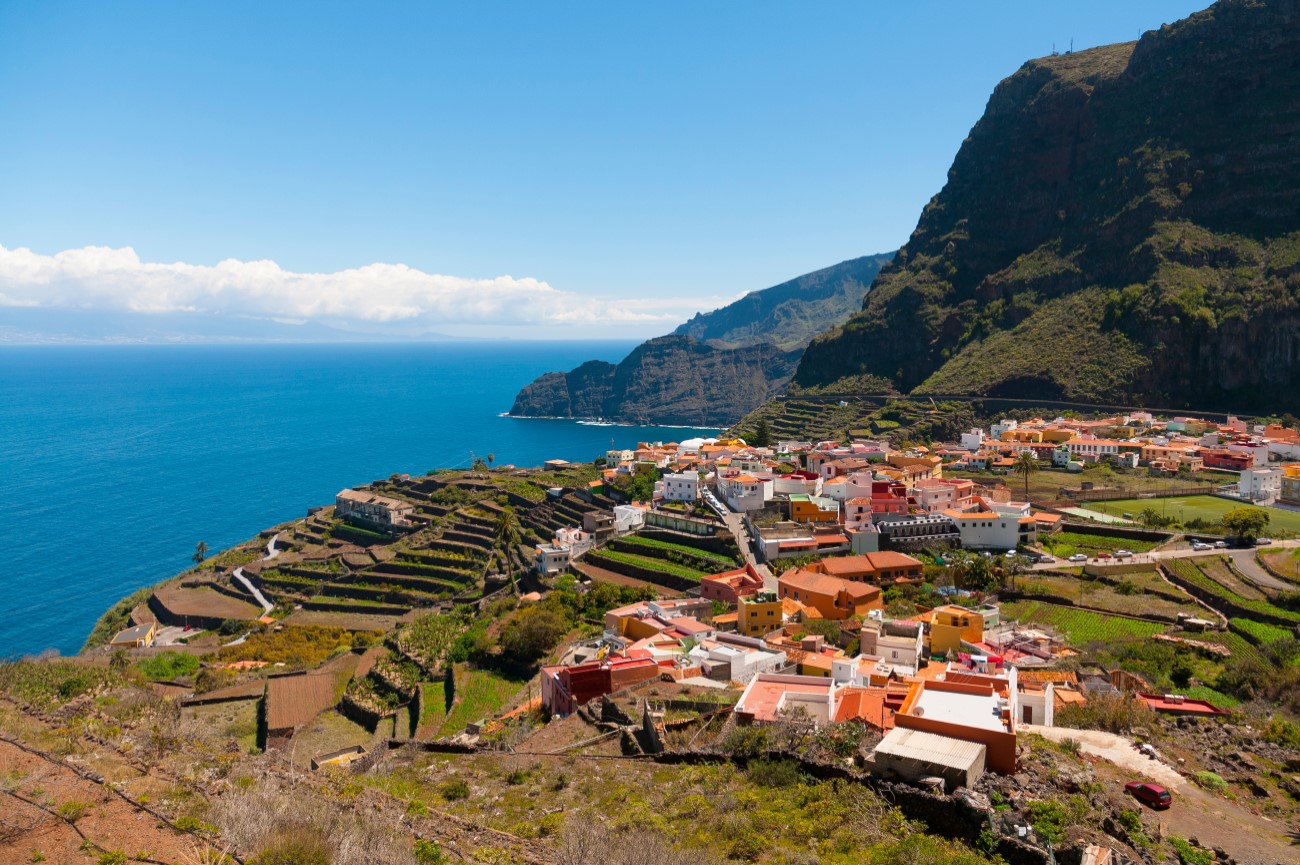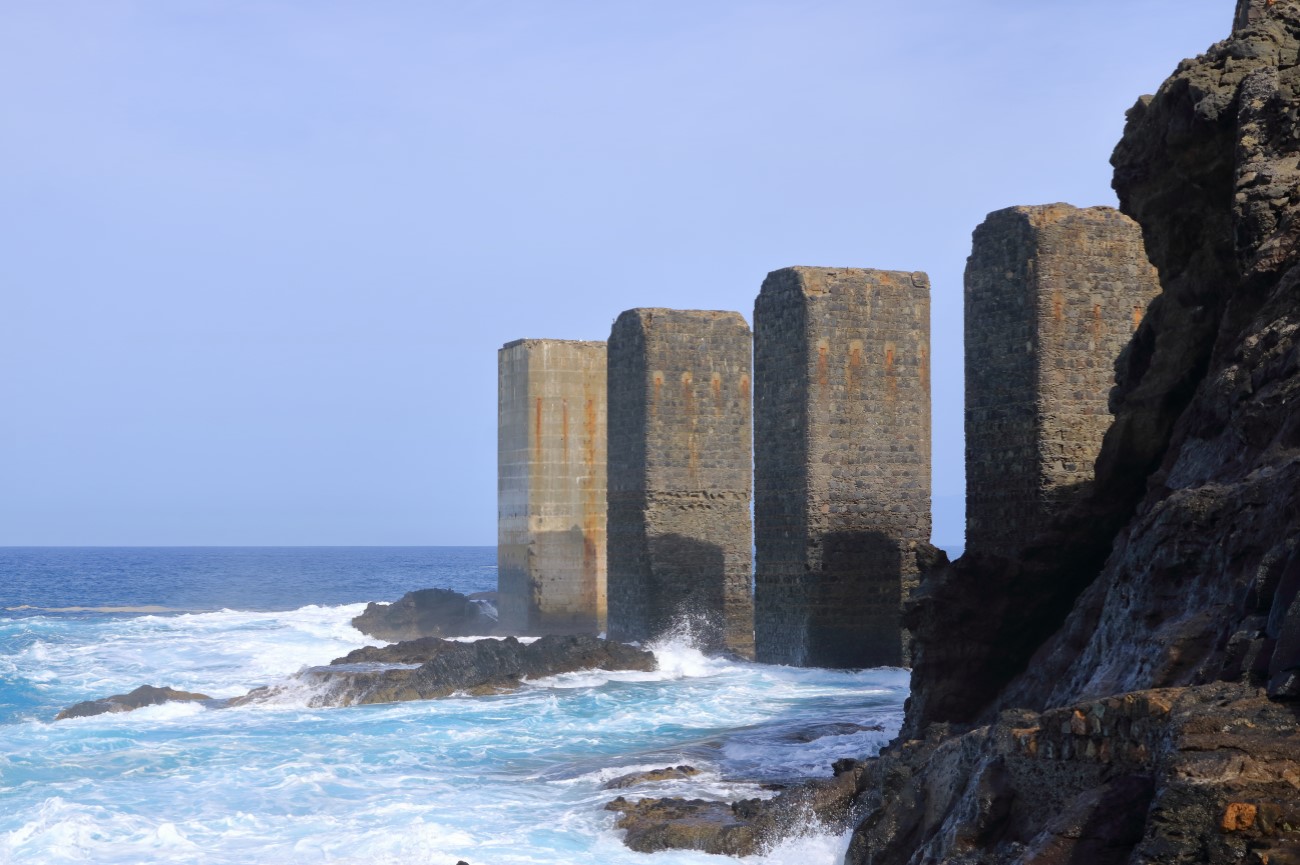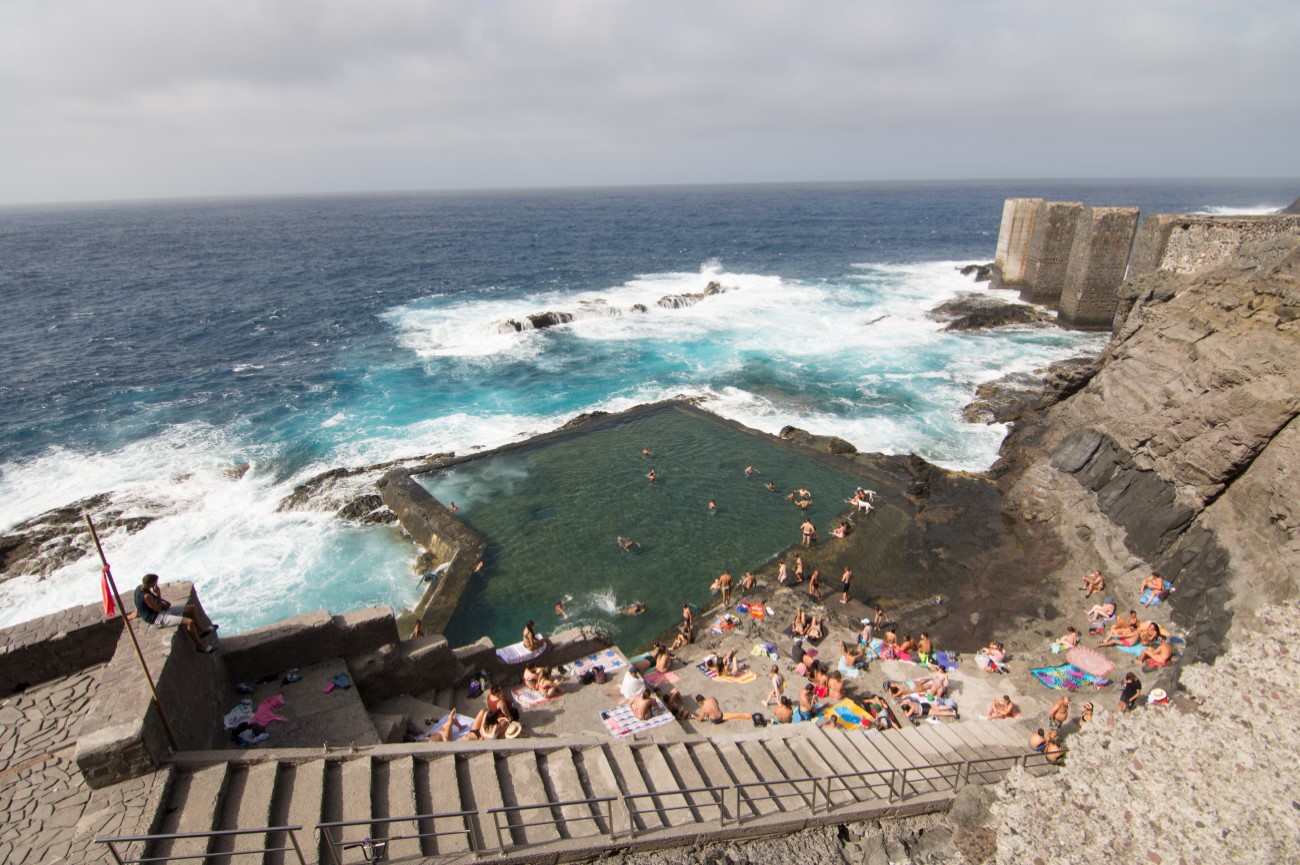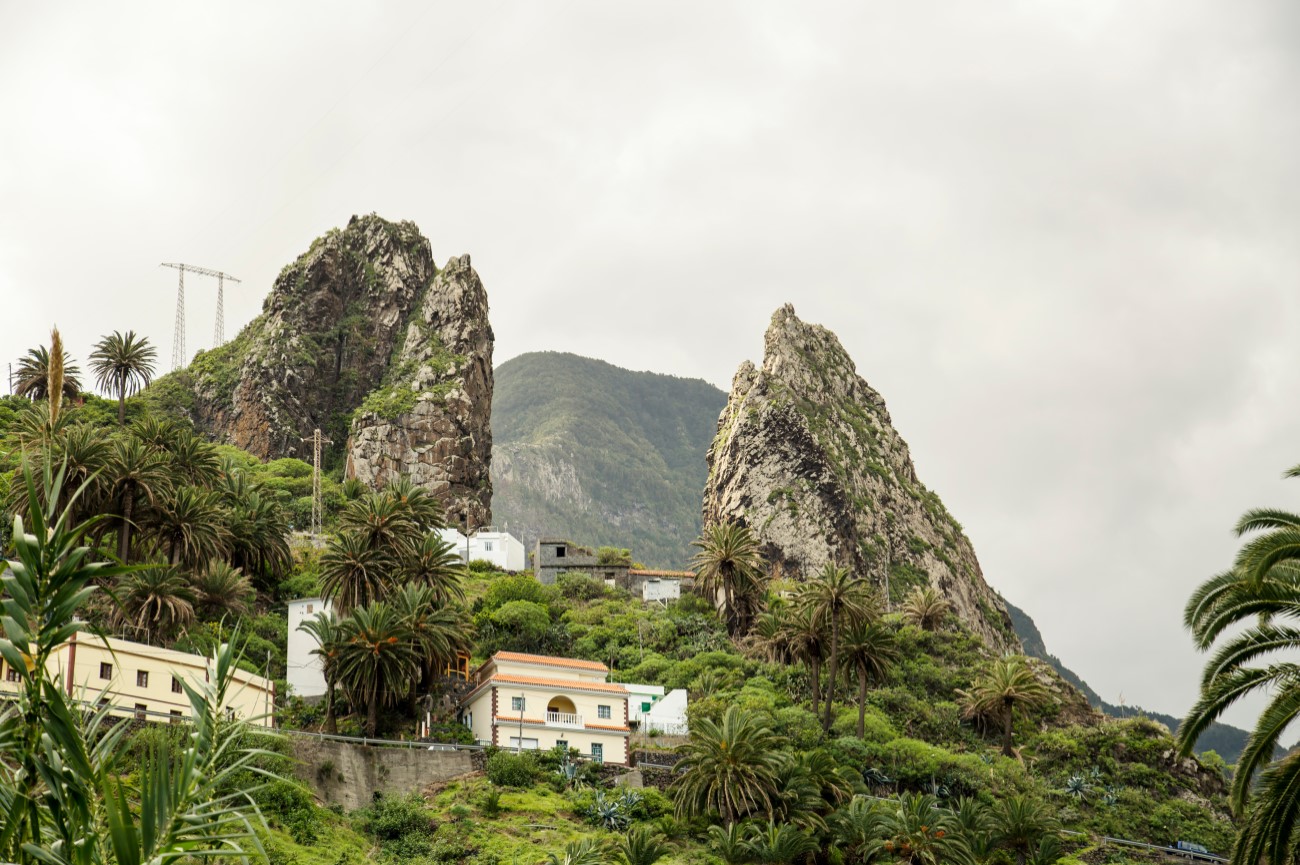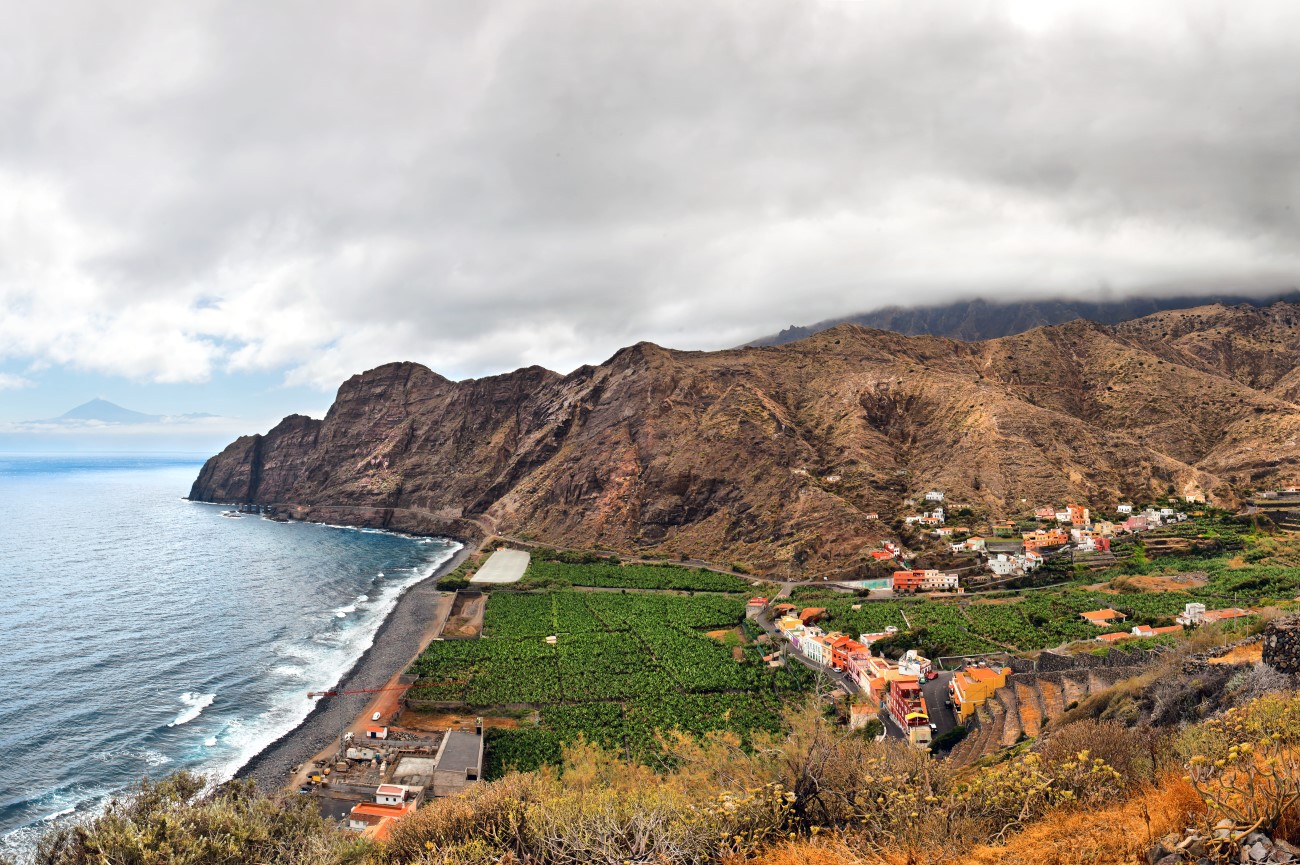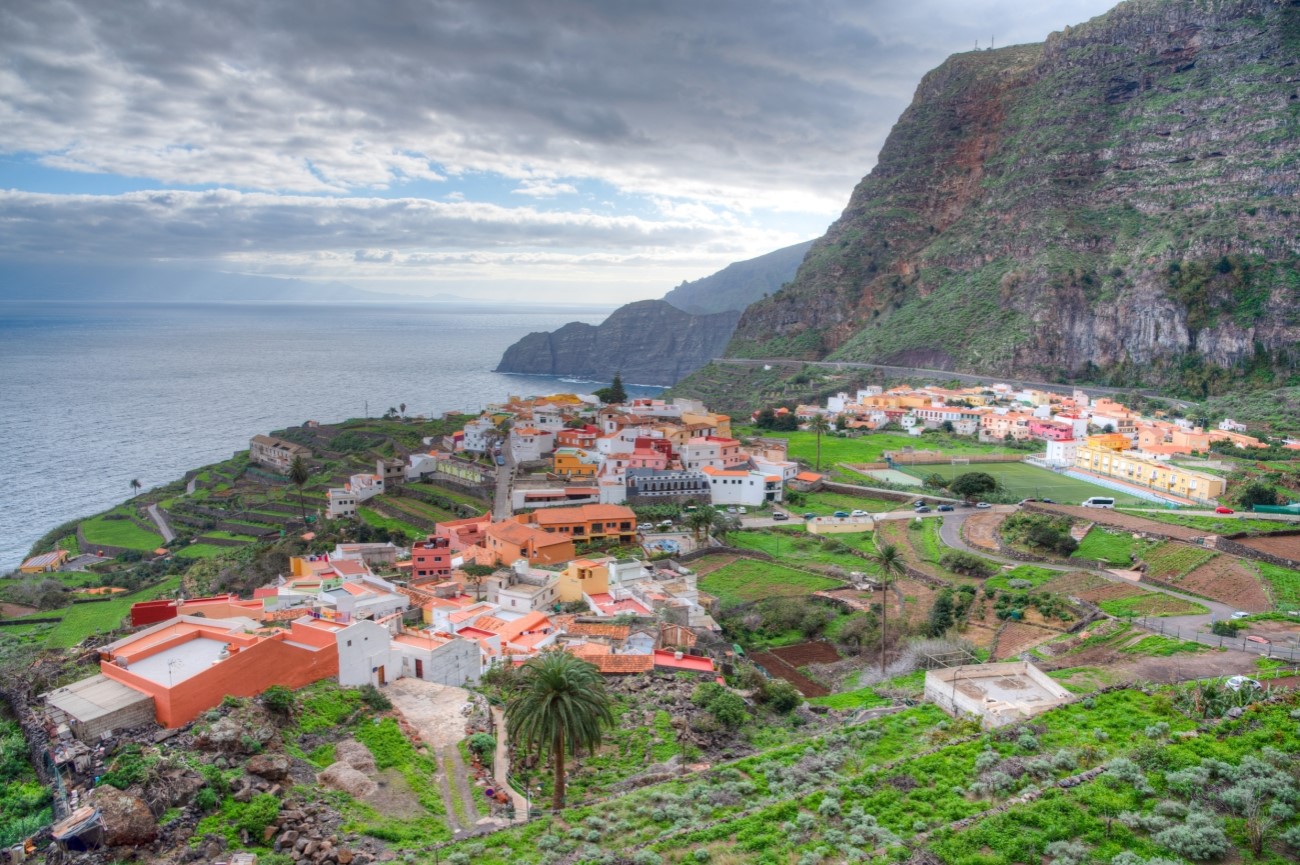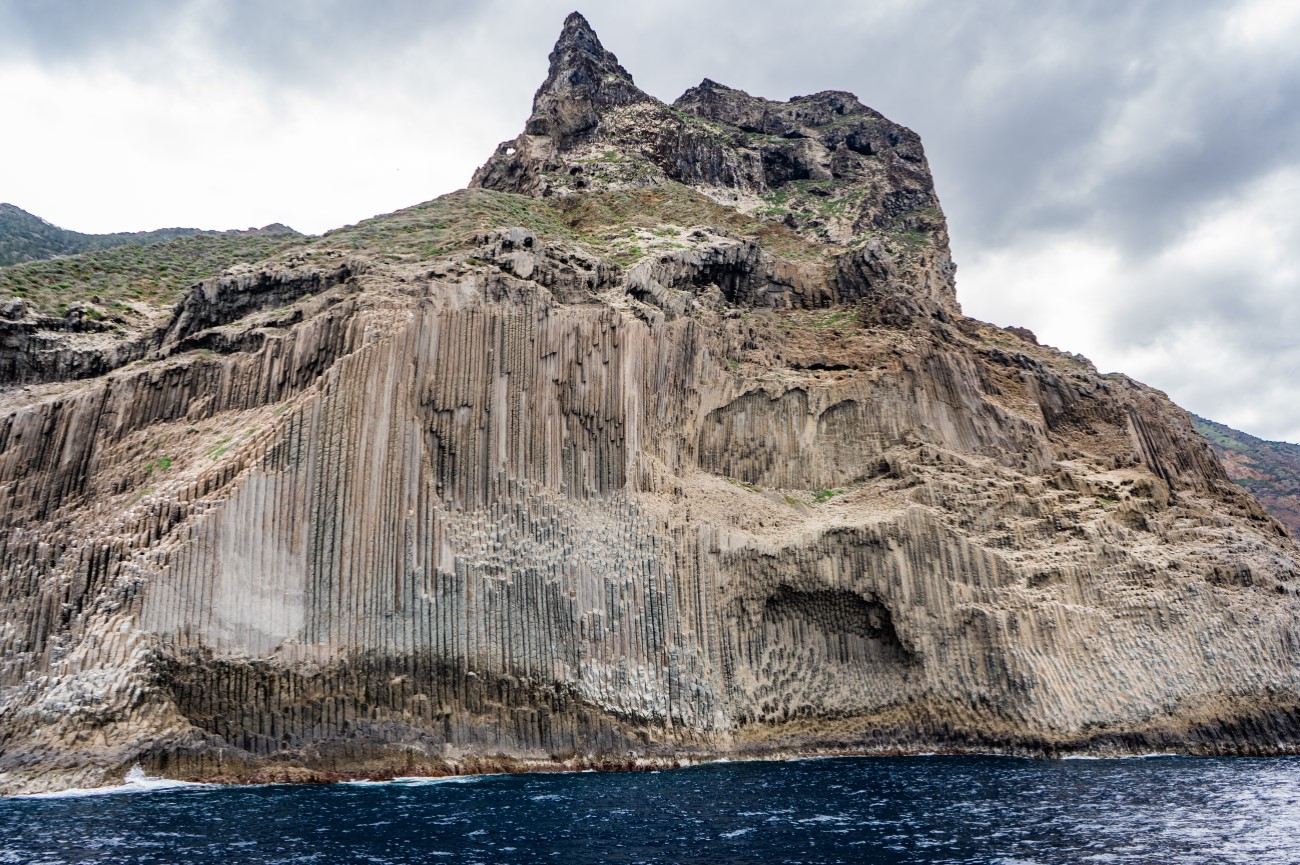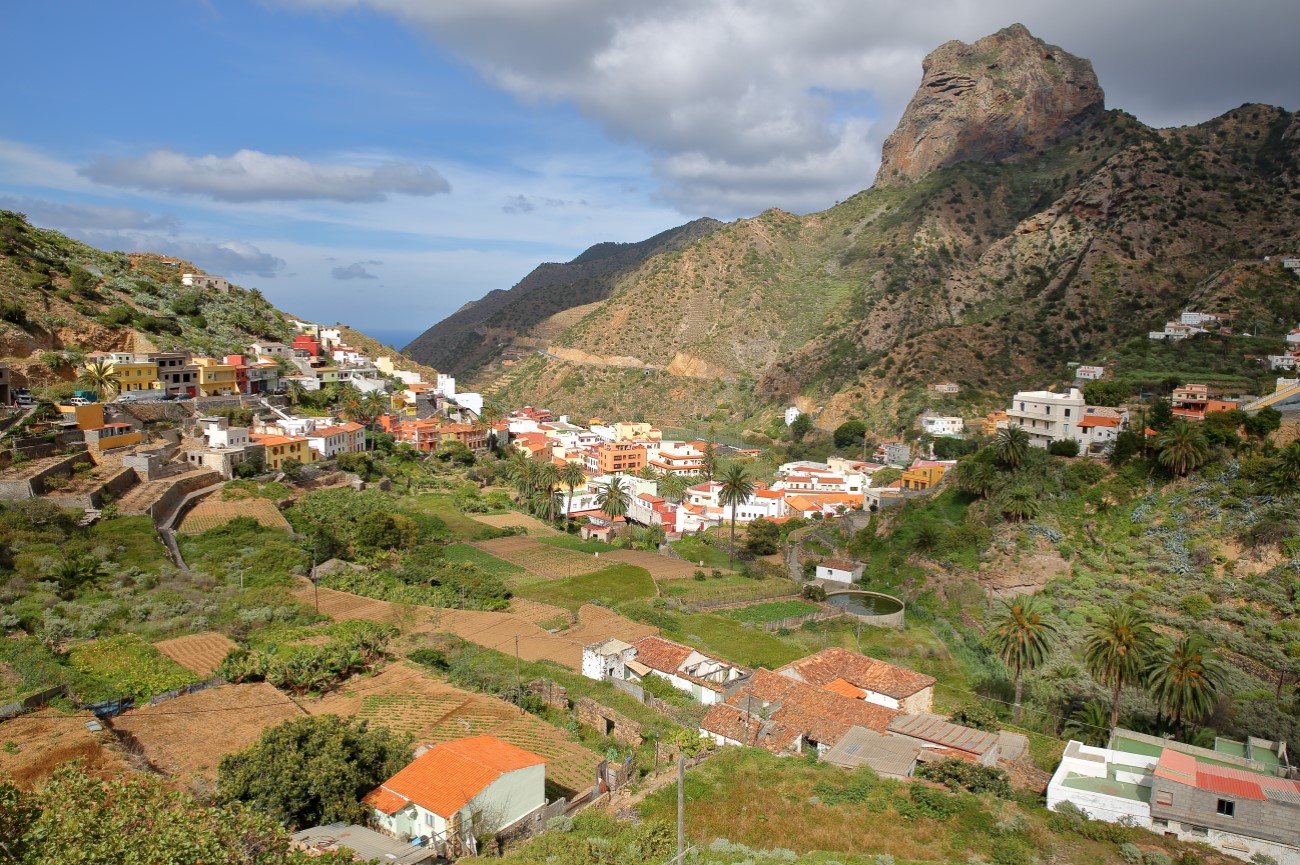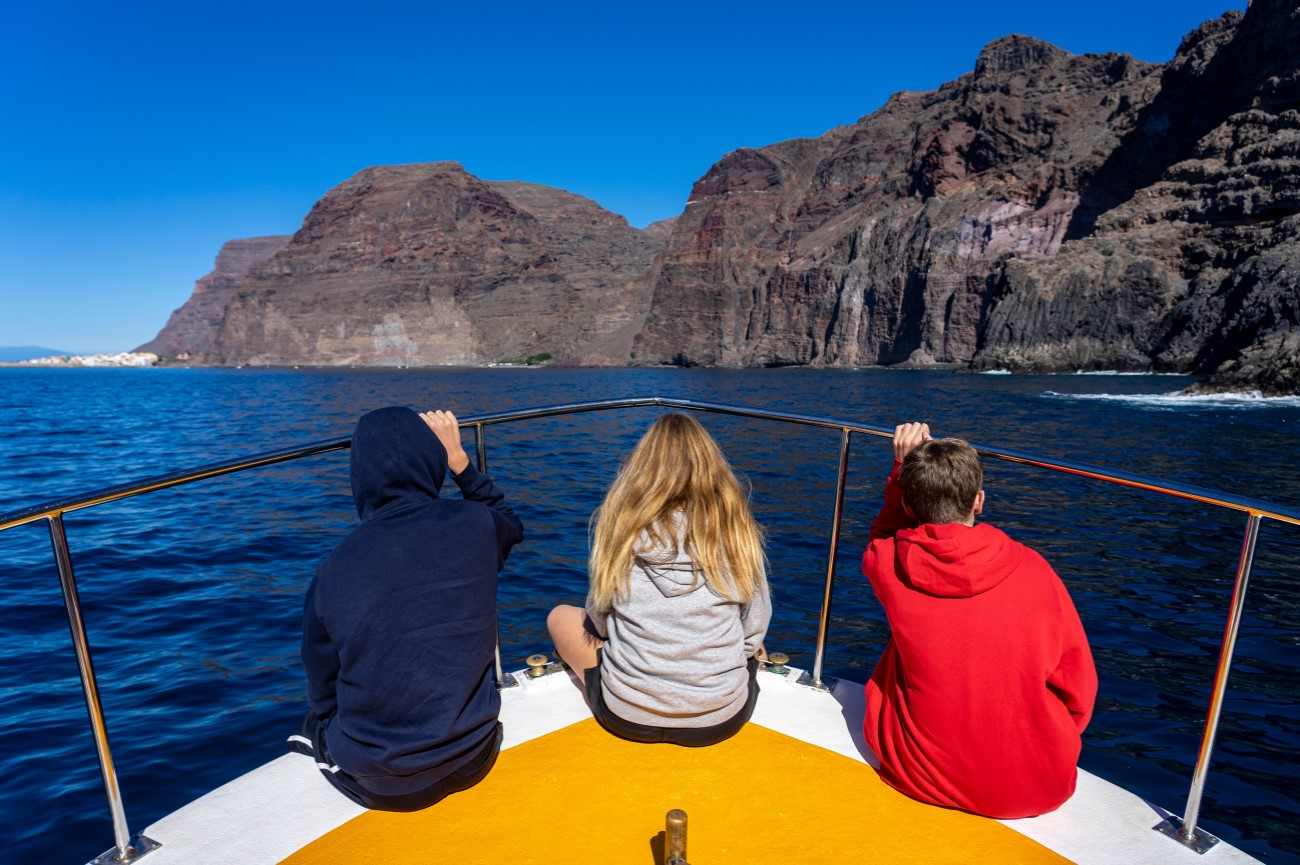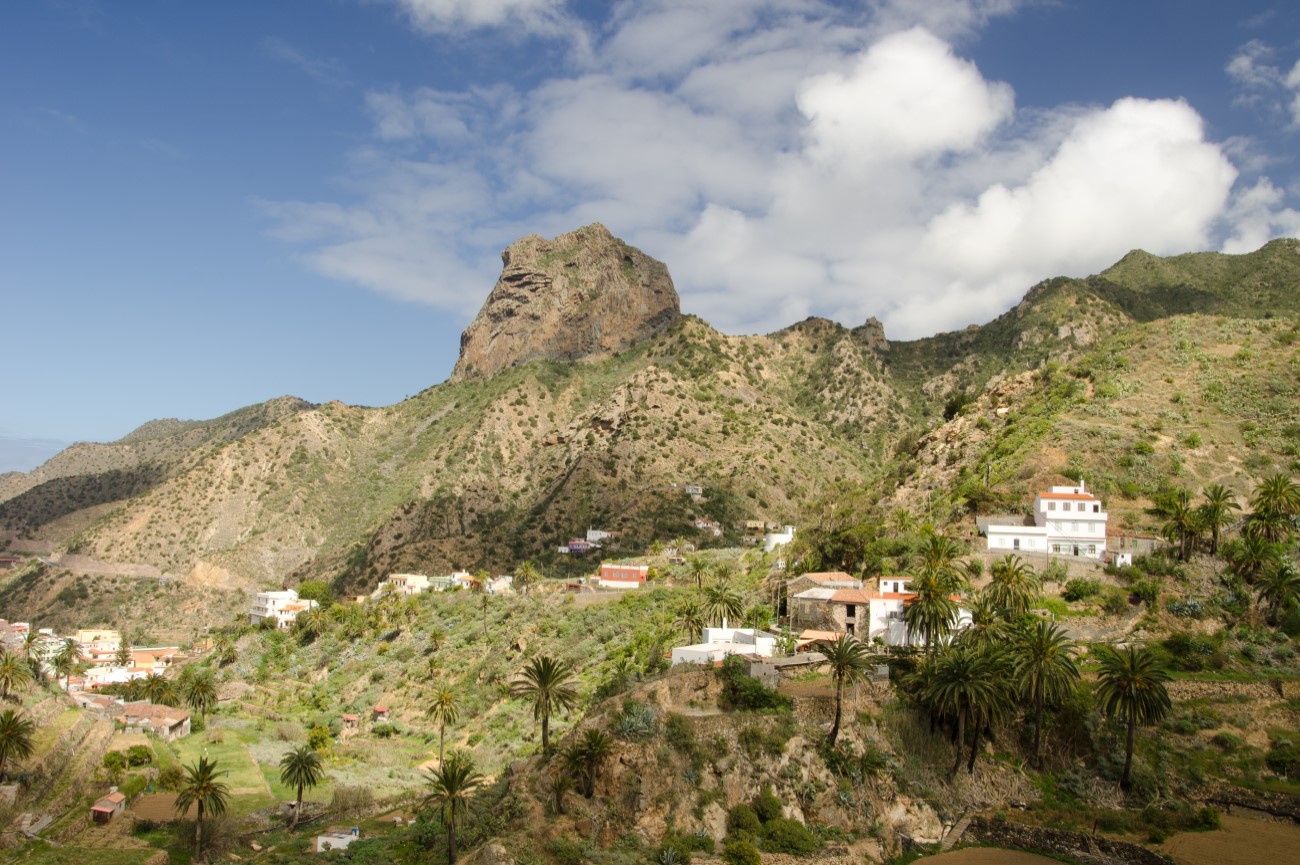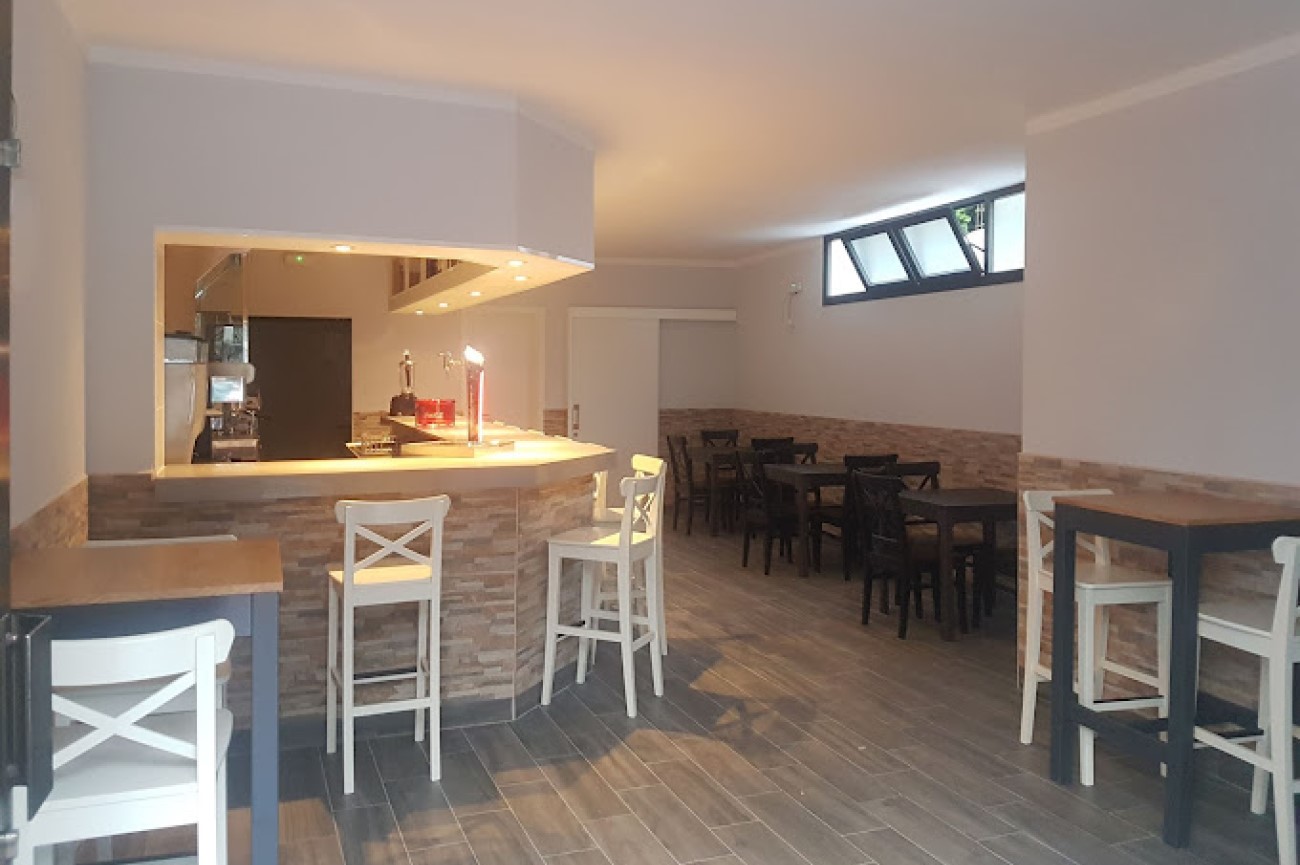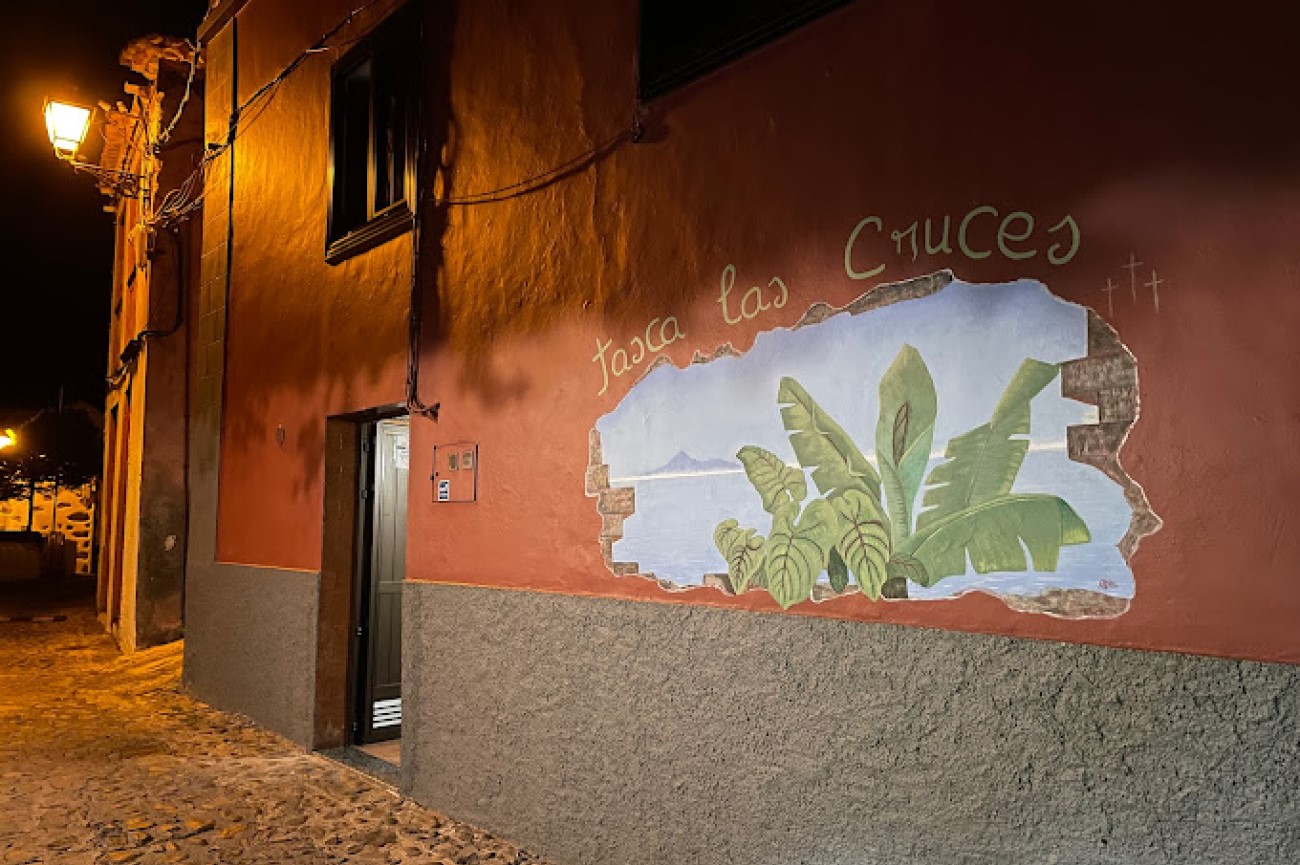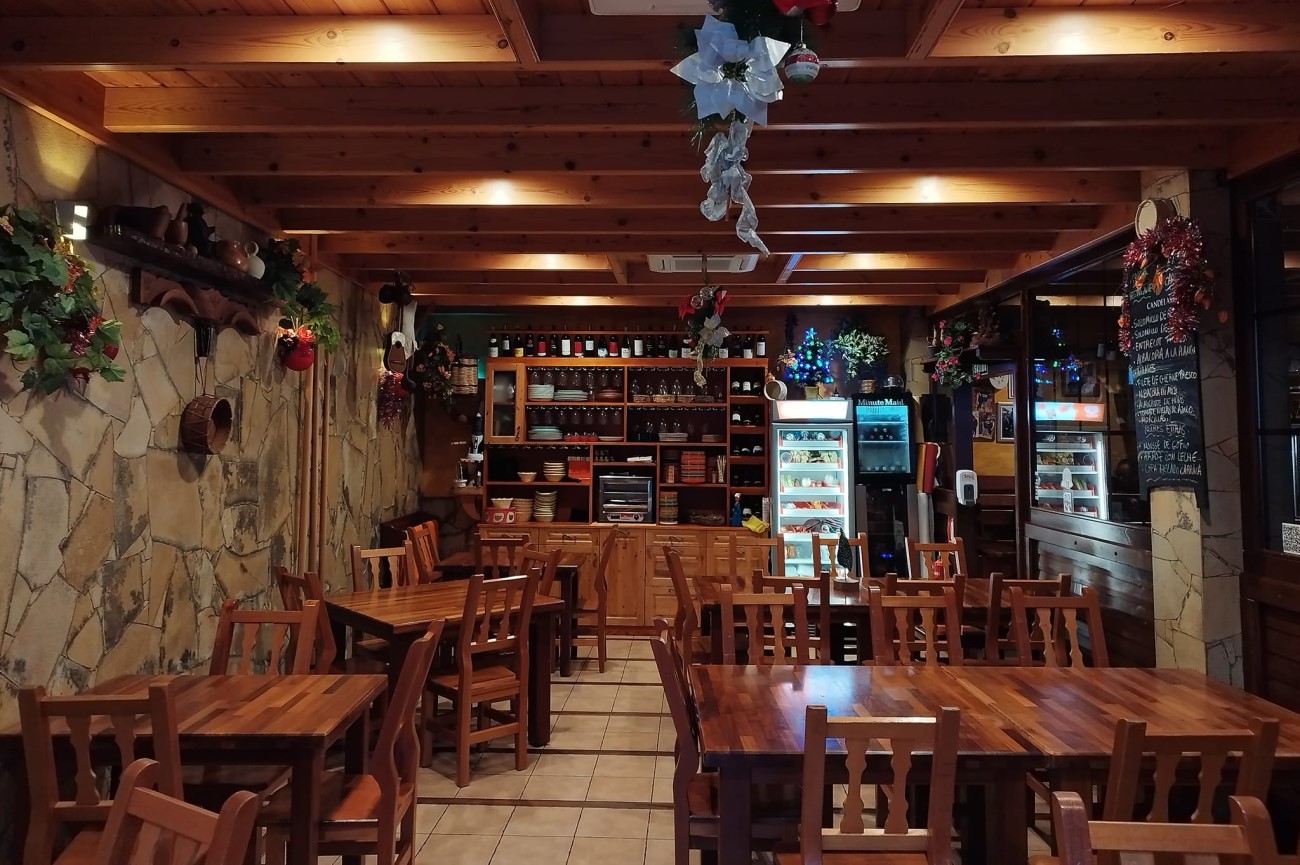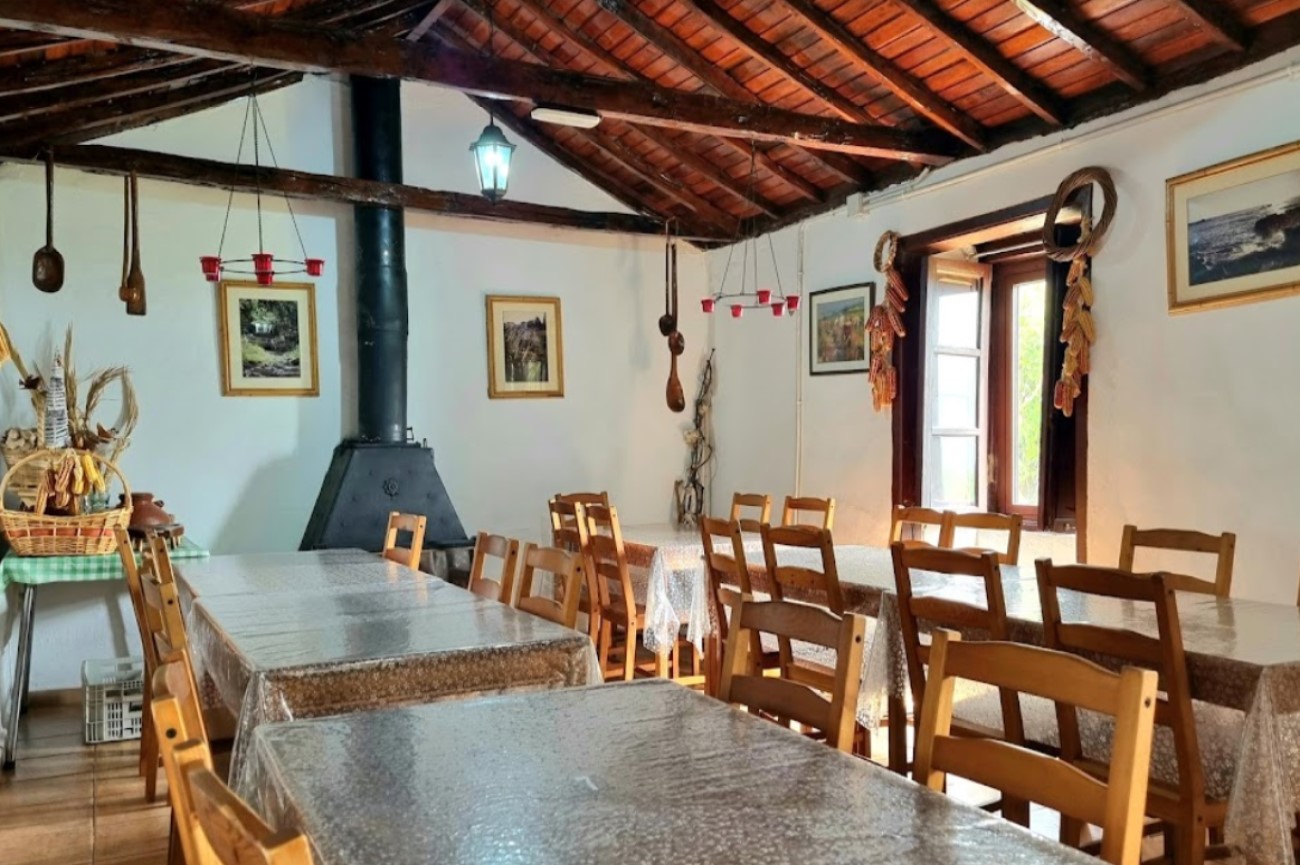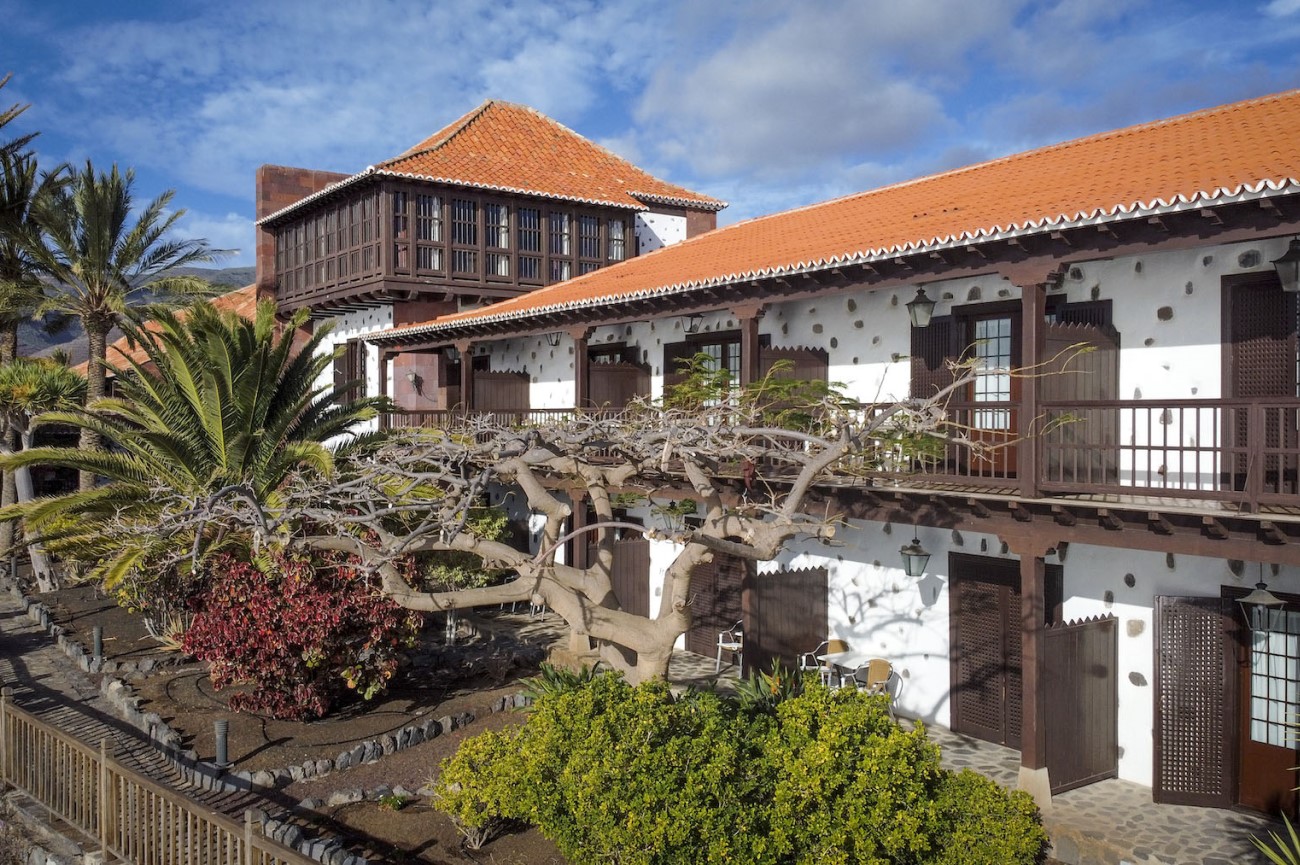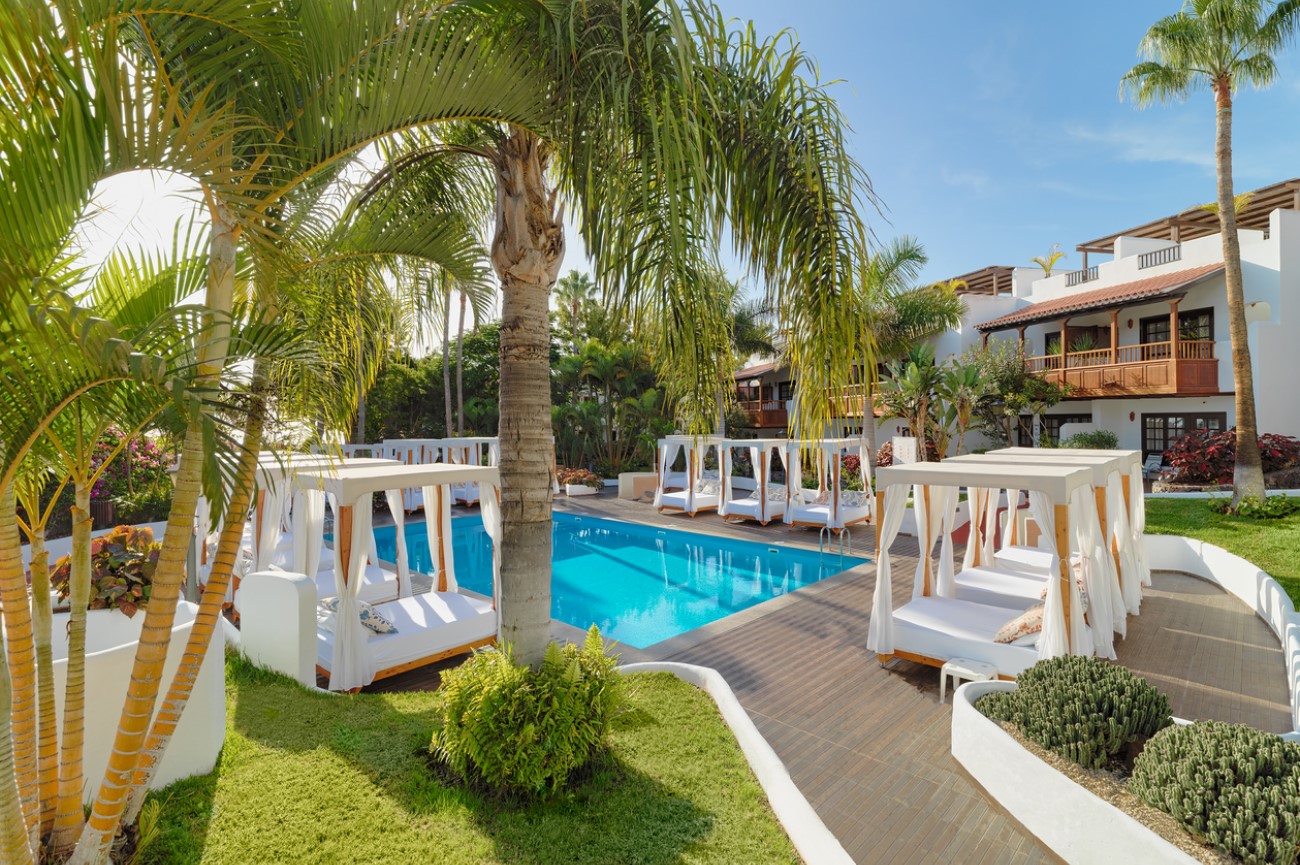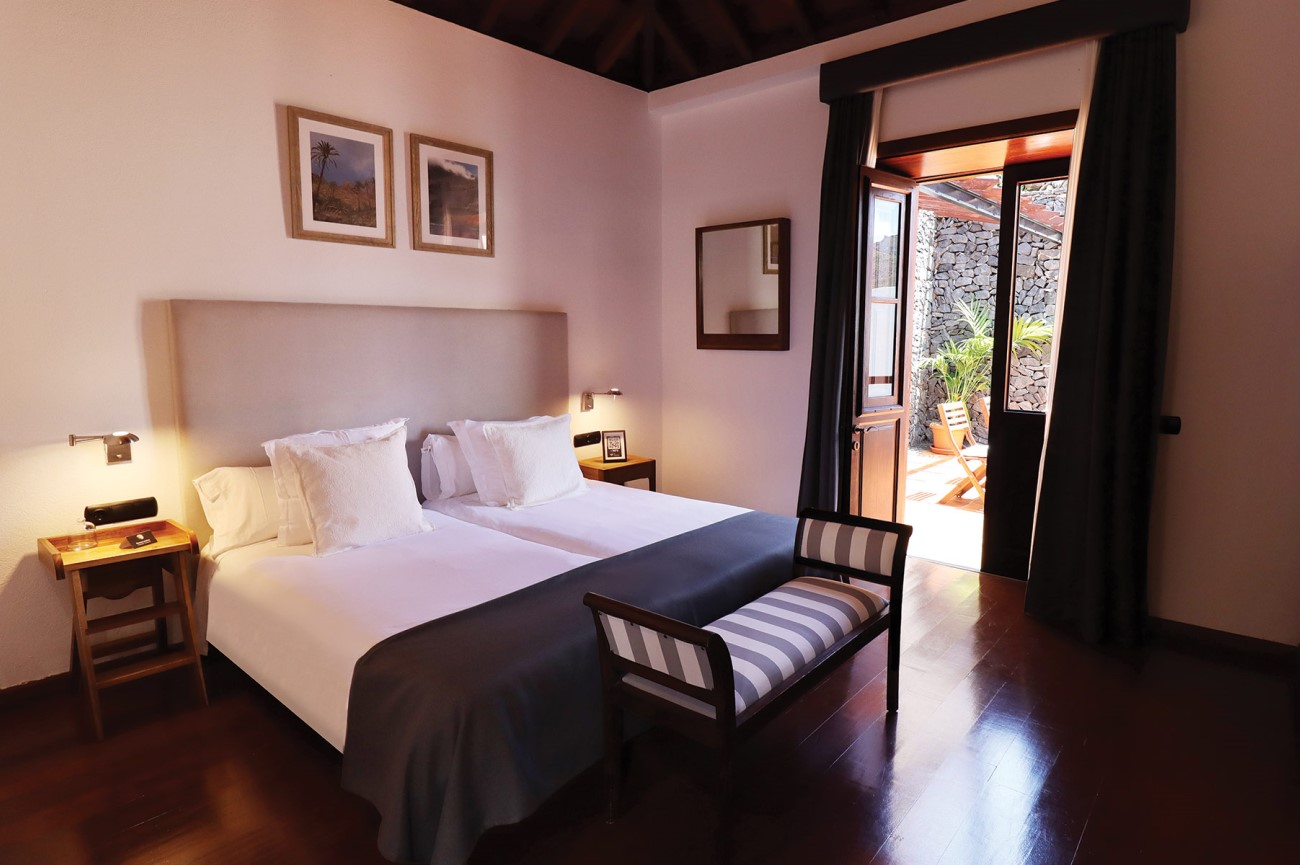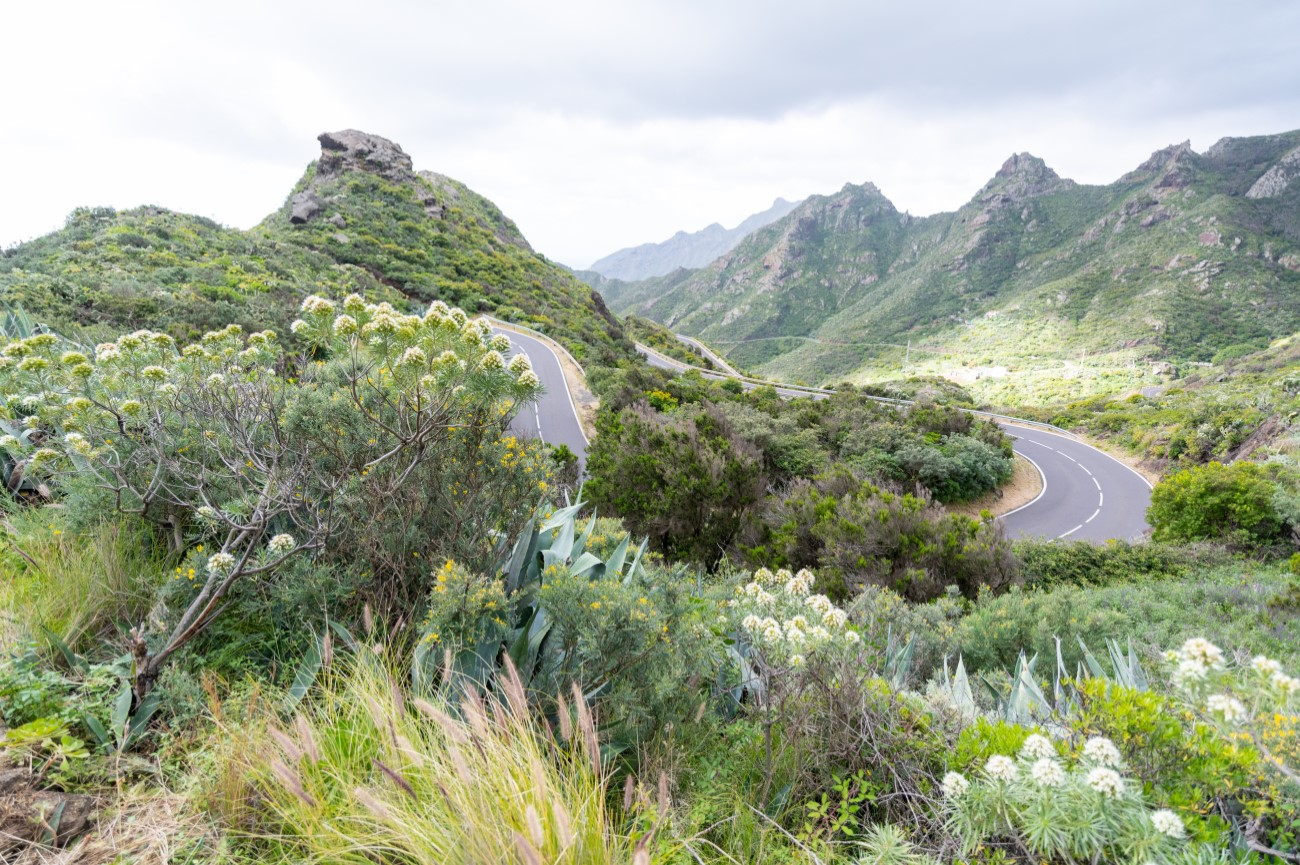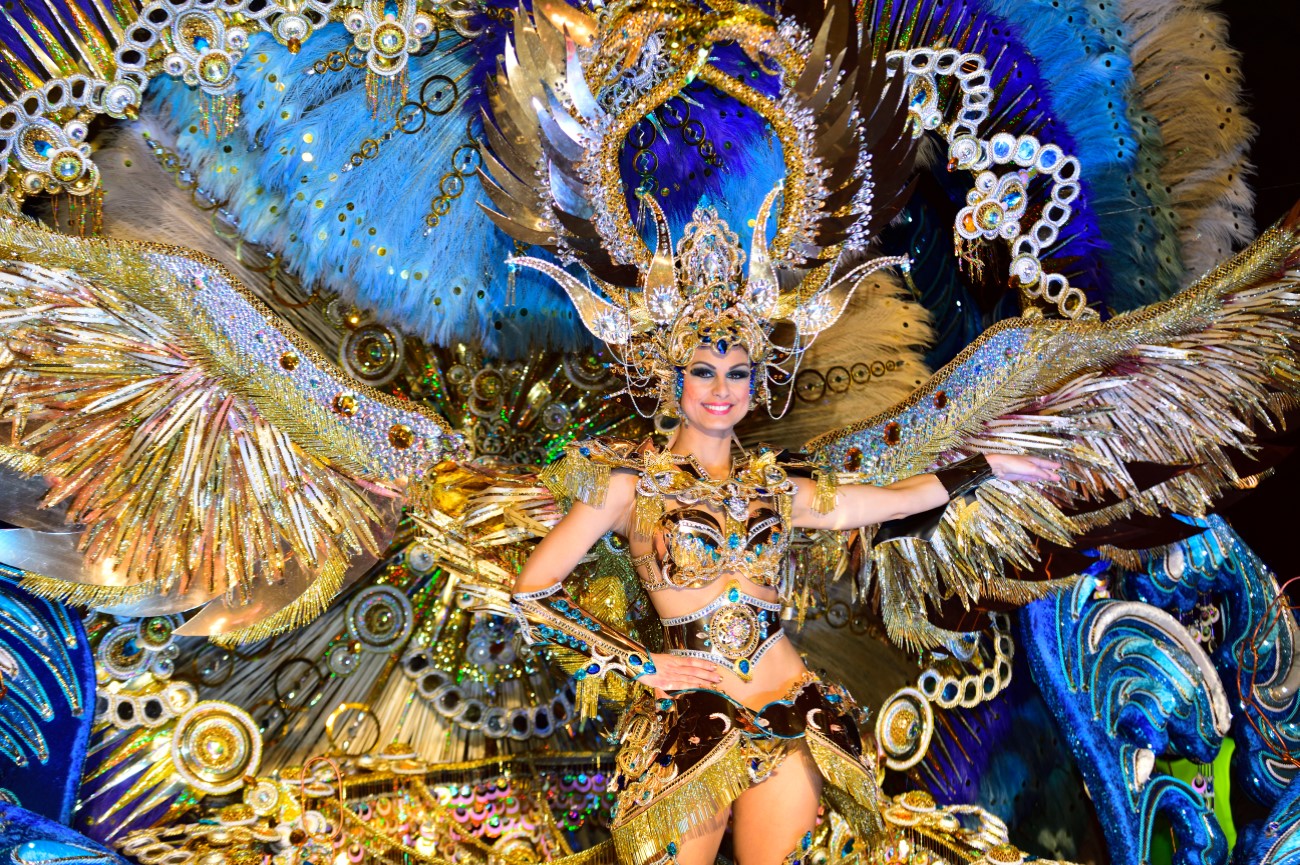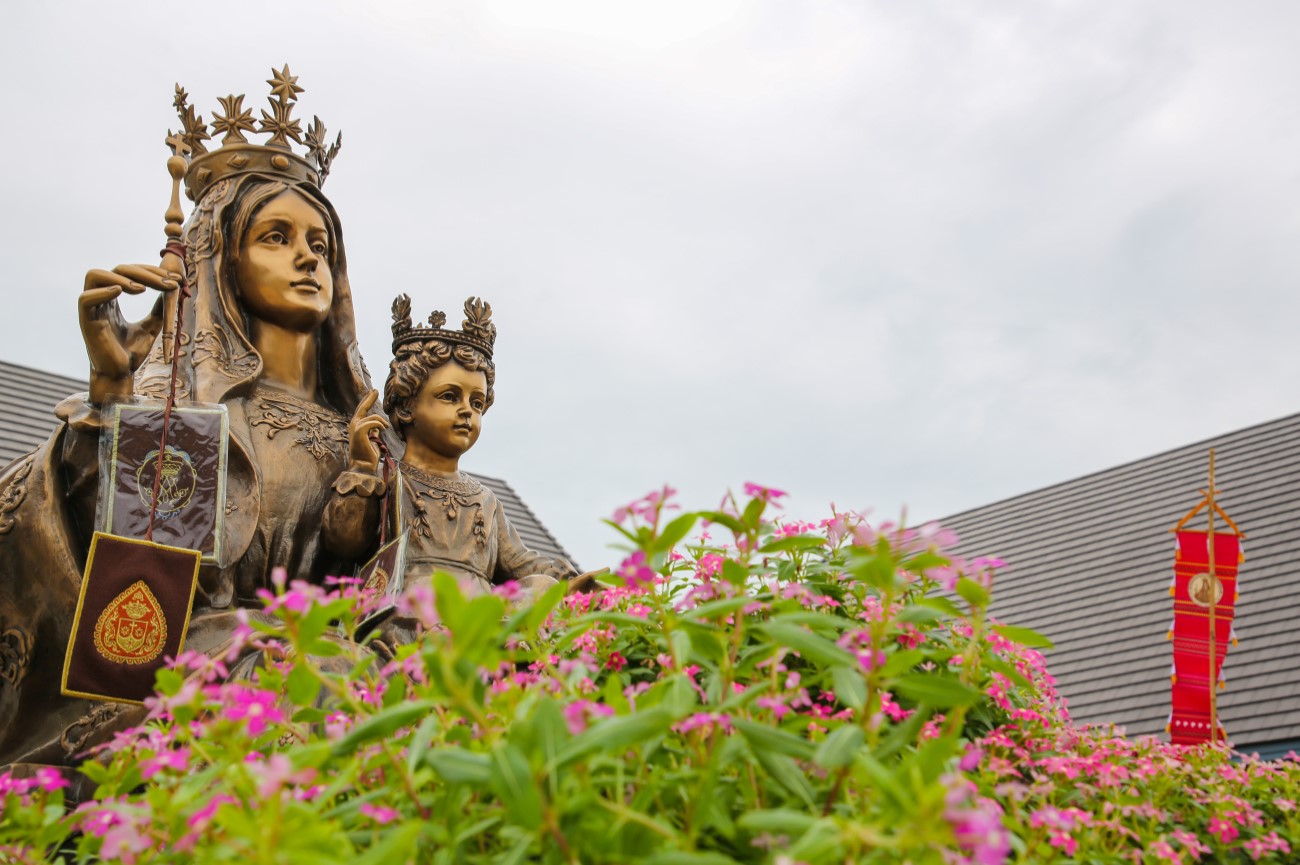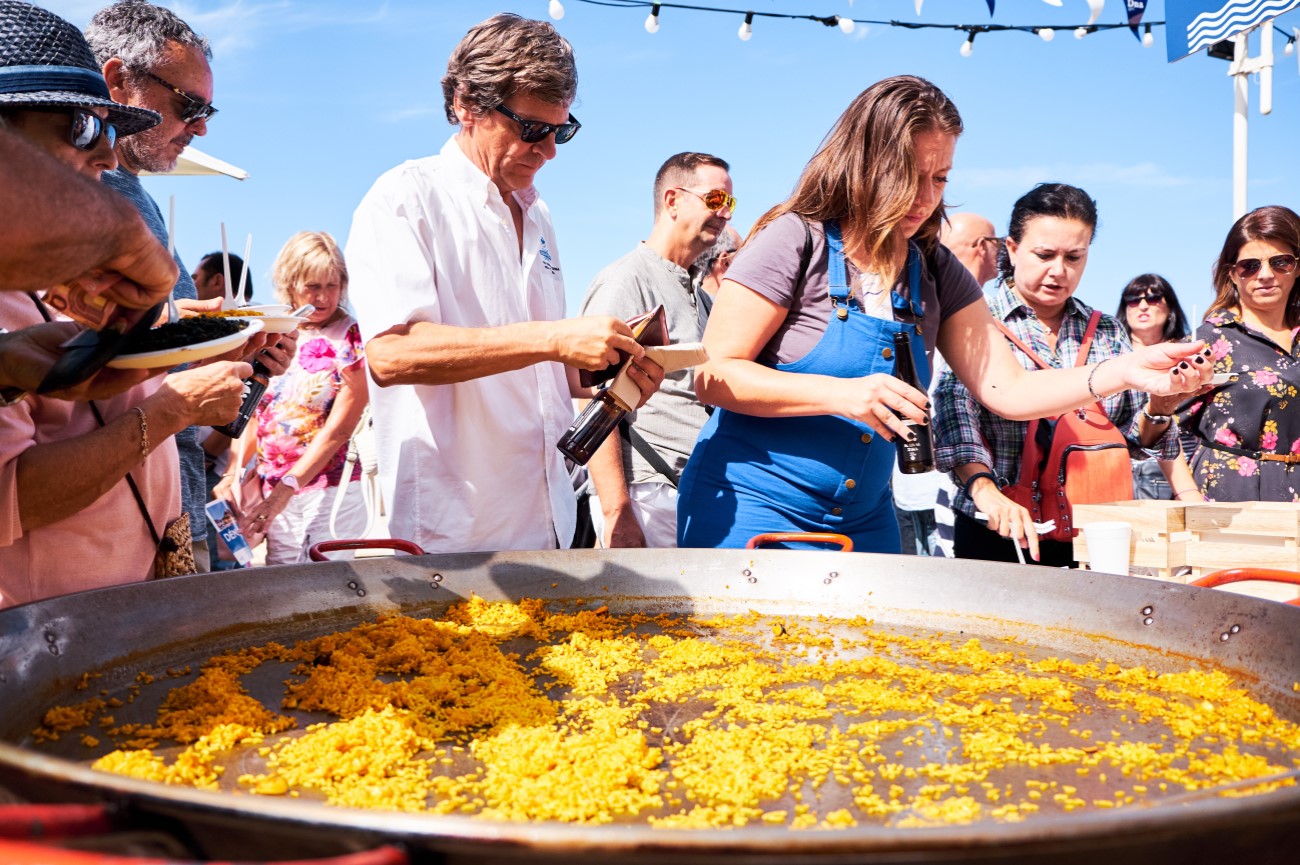Things to
do in La Gomera, Spain - 3-day itinerary
La Gomera is the second smallest of the main islands of the Canaries. It is one of the wildest corners of the chain, with nature taking over every corner. Visitors can hop aboard dolphin and whale-watching tours, relax on black sandy beaches or follow one of the many trails crossing the island’s volcanic landscape and the laurel forest of Garajonay National Park. In the heart of it all is San Sebastián, the laid-back capital with its pastel-coloured buildings lining the hills like rows of lego.
Our three-day itinerary will show you the best things to
see in La Gomera, including iconic viewpoints, trails and picturesque
villages.
Day 1 - San Sebastián & Garajonay

Morning: San Sebastián de La Gomera
We’re kicking off our trip at the island’s capital, San Sebastián de La Gomera. Christopher Columbus stopped by La Gomera on his way to America. Casa de Colón is the costume house where some say he spent the night. Inside is a collection of pottery by South American Chimú tribes, the type of art he would have encountered when he reached the new continent. Legend says the renowned navigator also took water from the island to bless the New World. These historical ties explain why La Gomera is also known as La Isla Columbiana.
After touring the house, head to the Archaeological Museum, where you can learn about the island’s archaeological features. Other things to see in San Sebastián include the municipal market, Iglesia De La Asunción and Torre del Conde, a 15th-century fortress surrounded by gardens.
Playa de San Sebastián
From the centre, take a walk down to Puerto de San Sebastián. Near the harbour is the beautiful volcanic beach of Playa de San Sebastián. The water is very calm, making it ideal for a swim. Backing the beach is a promenade filled with bars and cafés.
Afternoon: Mirador de Los Roques
Make your way up the hill to the Mirador de Los Roques, set within the Garajonay National Park. This is one of the most spectacular viewpoints on the island. Standing here, you’ll get a glimpse of three iconic rock formations: Roque Agando, Roque Ojila and Roque La Zarzita.
Mirador del Morro de Agando
Not far away from the last stop is another iconic viewpoint, the Mirador del Morro de Agando. You can see the Roque Agando from here and even Tenerife on a clear day. There is also a 12.4km trail down to Playa Santiago, which takes about four hours.
Garajonay National Park
One of the top sights in La Gomera is the Garajonay National Park. This ancient forest covers over a third of the island and is home to thousands of species of fauna and flora, with misty laurel trees being the predominant feature. The park gets its name from the myth ‘Gara and Jonay’, the Canarian version of Romeo and Juliet. According to the legend, Gara from La Gomera and Jonay from Tenerife ran away to the island’s highest point but ended up jumping to their deaths. You can learn more about the park and its surrounding trails at the Juego de Bolas visitor centre. An easy option is the Cañada de Jorge, a 3km route that starts near Valle Gran Rey.
Alto de Garajonay
Still within the park is the Alto de Garajonay, the highest peak on the island at 1,487 metres. The easiest way to get here is to park your car at Los Pajaritos or El Contadero. From there, it’s just a short walk to the peak, albeit a little hilly. Once you reach the top, you can enjoy incredible views of La Gomera and the surrounding islands if the sky is clear.
Day 1 - San Sebastián & Garajonay Tour Map
Day 2 - South

Morning: Playa de Santiago
Enjoy a relaxing morning at Playa de Santiago, a charming village on the island’s south coast. Capture the colourful houses framing the waterfront, and then head for a refreshing swim at the black sandy beach. The beach is also the departing point for many activities, such as kayaking, diving and snorkelling, which allow you to explore the nearby caves.
Chipude
Heading north through the mountains, you’ll soon reach the small town of Chipude. Take your time to explore its quiet streets, stopping to visit the local pottery shop and the 16th-century Iglesia Virgen de la Candelaria.
Fortaleza de Chipude
On the outskirts of Chipude is the Fortaleza de Chipude, a volcanic mountain that draws many hikers. Standing at more than 1,200 metres high, it is visible from nearly every corner of the island.
From Chipode, you can follow the stony road to the top. The hike takes around one hour each way. Once you get there, you can expect unparalleled views of La Gomera as well as nearby Tenerife and La Palma.
Afternoon: Valle Gran Rey
Make your way west until you reach Valle Gran Rey. This small coastal town is a favourite holiday spot among locals. There are several black sandy beaches where you can go for a swim and catch the sunset, such as La Calera and La Puntilla. You can also head up to one of the nearby viewpoints like Curva del Queso or Mirador de El Palmarejo.
Playa del Inglés
End the day at Playa del Inglés, one of the best beaches on the island. This beautiful stretch has a particular feature: clothing is optional. Despite this, it is a very peaceful beach with calm waters ideal for the whole family.
Day 2 - South La Gomera Tour Map
Day 3 - North

Morning: Pescante de Hermigua
For our last day in La Gomera, we’re exploring the north side, starting at Pescante de Hermigua. The village is surrounded by a couple of davits, a type of suspension equipment that locals once used to load and unload boats that were too big to reach the shore. These are no longer active but remain part of the island’s history. You can also visit the natural swimming pools. Due to regular landslides, however, the pools can be temporarily closed, so always check before visiting.
Roques de Petra y Pedro
After visiting the picturesque village of Hermigua you can visit the Roques de Pedro y Petra (the Roques de Pedro and Petra) which is a short 20 min drive inland. According to the popular legend, Pedro and Petra were two lovers that were turned to stone and separated by lightning. These rocks were formed due to the volcanic activity on the island.
Mirador de la Punta
On the way to Agulo, stop at Mirador de la Punta and enjoy the stunning views of the Hermigua valley and the sea in the distance. If you’re lucky, you may catch a glimpse of Tenerife too.
Agulo
Agulo is often called the “bon-bon of La Gomera”. This picturesque village sits high on a hilltop, surrounded by lush banana plantations. Take a walk along the village and enjoy the panoramic views along the way.
Mirador de Abrante
About 10km away from Agulo, you’ll find the Mirador de Abrante, a viewpoint which also houses a restaurant. For the best views, head to the glass skywalk, which stands 625 metres above sea level. At the restaurant, you can order a round of tapas and other Canarian dishes while enjoying Silbo demonstrations. El Silbo is a type of whistle historically used by La Gomera residents to communicate between the ravines.
Afternoon: Punta de Los Órganos
Los Órganos is a natural rock formation that resembles giant church organ pipes, hence the name. Formed by the solidification of basalt magma, this natural structure is 175m wide and 80m high, with more lying underwater. To see it up close, we recommend booking a boat tour.
Vallehermoso
Our last stop on this tour is Vallerhermoso. Among the top attractions here is the Plaza de la Constitución, the town’s central square. It’s flanked by the town hall and several bars and restaurants. Take some time to explore this area and the surrounding streets before heading to the botanical garden, a four-acre park featuring plants from across the globe.
Day 3 - North La Gomera Tour Map
Other things to do in La Gomera:
- Wine tasting: Wines in La Gomera have a special character thanks to the island’s volcanic soil and plentiful sunshine. Most of the production is dedicated to white wines and uses forastera grapes. If you want to sample several producers at once, book a tasting at the Juego de Bolas Visitor Centre.
- Dolphin watching: Around La Gomera, there is a diverse marine life. Dolphins, whales and sea turtles can all be spotted off the island’s shores. Several companies run daily excursions departing from Playa de Santiago or Vueltas. Some even include food and drinks.
- Roque Cano: For hiking lovers, Roque Cano is a must-visit. This rock formation is more than 200 metres high and is the destination of many trails on the island. The most famous one is a 12km trail starting in Vallehermoso and ending near the top. Only experienced hikers can proceed from here, as you’ll need ropes and a harness to climb up.
Top things to do with kids in La Gomera
La Gomera may be a small island, but it is full of family-friendly attractions. Around Playa de Santiago, you can experience several watersports, including kayaking and snorkelling. This is also the departing point for many dolphin and whale-watching tours. Other beaches ideal for children includes Playa del Inglés, Play San Sebastián de La Gomera, La Caleta and Las Vueltas.
Kids will also enjoy exploring the misty grounds of the Garajonay National Park. There are several easy trails ideal for families who want to hike the area. In the south of the island, you can join a horseback riding tour to capture the Drago of Alajeró, the island's oldest Drago tree. While up north is Los Órganos, an impressive chain of lava tubes shaped like organs.
Where to eat in La Gomera
La Gomera has a rich cuisine based around local ingredients, such as cheese, potatoes, gofio and guarapo (sweet sage). Among the most popular dishes is the almogrote, an aged cheese with a pate-like texture and mojo canario, a spicy spread that pairs perfectly with Gomeran wine. Of course, there is also room for the papas arrugadas, the wrinkled potato dish that you’ll find all over the Canaries. Another famous recipe is the watercress stew, often paired with pork ribs, corn and a little bit of gofio. For dessert, don’t miss the torta de vilana, a cake made with potatoes, raisins and almonds. Below are some of the best places to eat in La Gomera:
- Gastro Tasca Estadio: Set in Hermigua, this traditional restaurant is famous for its bacalao (codfish), here served with a leek and seafood sauce. Other favourite dishes include garlic mushrooms and the almogrote.
- Tasca Las Cruces: This cosy tasca in Agulo serves typical Gomeran dishes, like almogrote and tuna with mojo and papas arrugadas (wrinkled potatoes). It’s a small place, so it’s worth booking a table in advance.
- Tasca Restaurante El Carraca: If you’re around Vallehermoso, you can stop by this restaurant. The menu includes several veggie-friendly options. Among the specialities are the tomate negro al ajillo (black tomato with garlic) and the eggplant with honey from Palma.
- Restaurante Casa Efigenia La Montaña: Casa Efigenia has been welcoming customers since the late 1940s. Located in Las Hayas, it serves affordable comfort food using ingredients from the garden, making it an ideal option for vegetarians. Make sure to try the watercress stew or the puchero.
Where to stay in La Gomera
- Parador de La Gomera (4 stars): This four-star hotel stands out with its speckled stone facade. It is located in San Sebastián, making it the perfect base to explore the island. Rooms offer views of the sea and the nearby island of Tenerife. The property also features a restaurant, an outdoor pool and lush gardens.
- Hotel Jardin Tecina (4 stars): Facing the Playa de Santiago, this hotel is ideal for families. There is direct access to the beach as well as several restaurants, outdoor pools and a kid's club. Guests also have access to a large organic garden and a golf course.
- Hotel Rural Casa Los Herrera (2 stars): Occupying a 19th-century estate, this rural hotel was completely renovated in 2010. It is located right amidst the mountains in Hermigua, which is convenient for those looking to follow the nearby hiking trails. There is also a restaurant on-site focusing on local produce.
Best time to visit La Gomera
Like most of the Canary Islands, La Gomera has subtropical weather with mild temperatures all year round. Most days are sunny, with the occasional rain pouring inland. This means you can visit the island during pretty much any season. The hottest months, however, are August and September, with temperatures reaching the mid-20s. This is the ideal time for beach days, but it can also be slightly busy with tourists. Alternatively, you can schedule your trip around one of the island’s traditional festivals.
La Gomera Festivals
- Carnival: Carnival is one of the most important festivities in the Canaries, and La Gomera is no exception. The biggest celebrations take place around Playa Santiago and Alajeró. Every year around February or March, the island chooses a new theme and locals adapt their costumes accordingly. The festivities start with a parade and end with a big dance in the capital’s main square and the burning of the sardine.
- Nuestra Señora de Carmen: Held in mid-July this festival celebrates the fisherman's guardian saint. Local men decorate their boats and navigate along the coastline in a sea procession.
- Fiesta de San Roque: Fiesta de San Roque is a three-to-five-day festival taking place in the first half of August. The celebration begins with a morning procession from San Roque square to the beach of Tapahuga, which lasts about five hours. Once they reach the beach, everyone tucks into a big paella.



